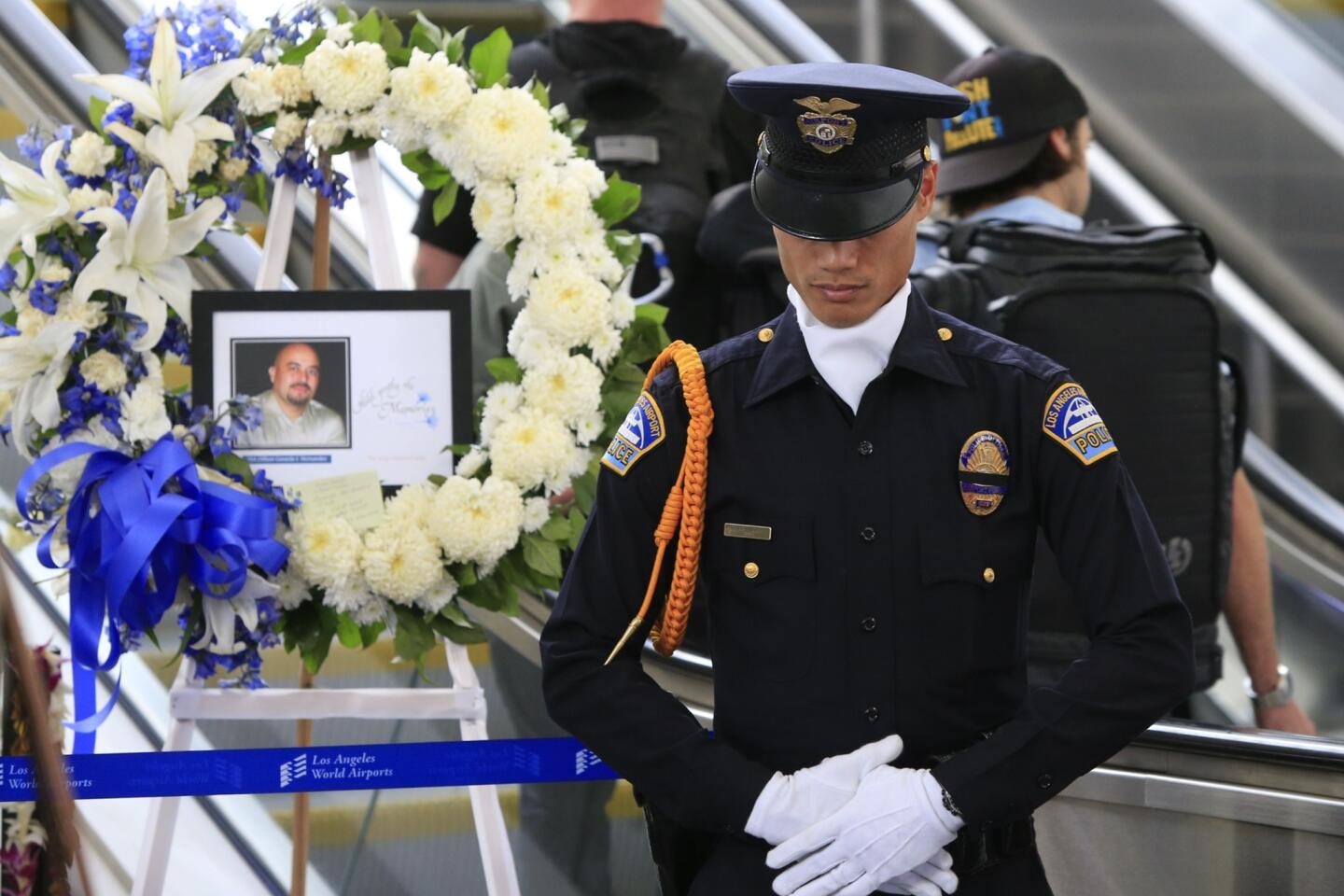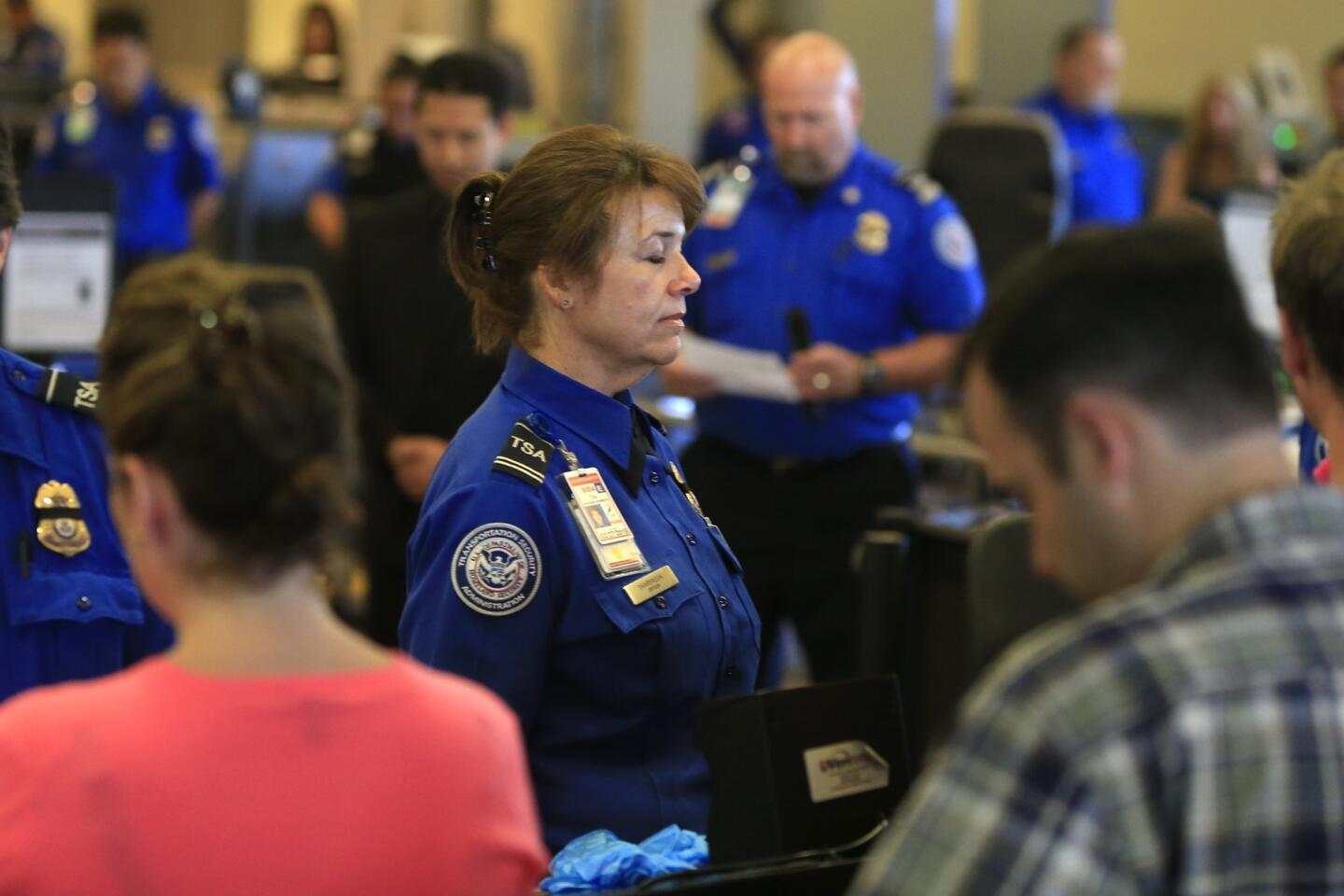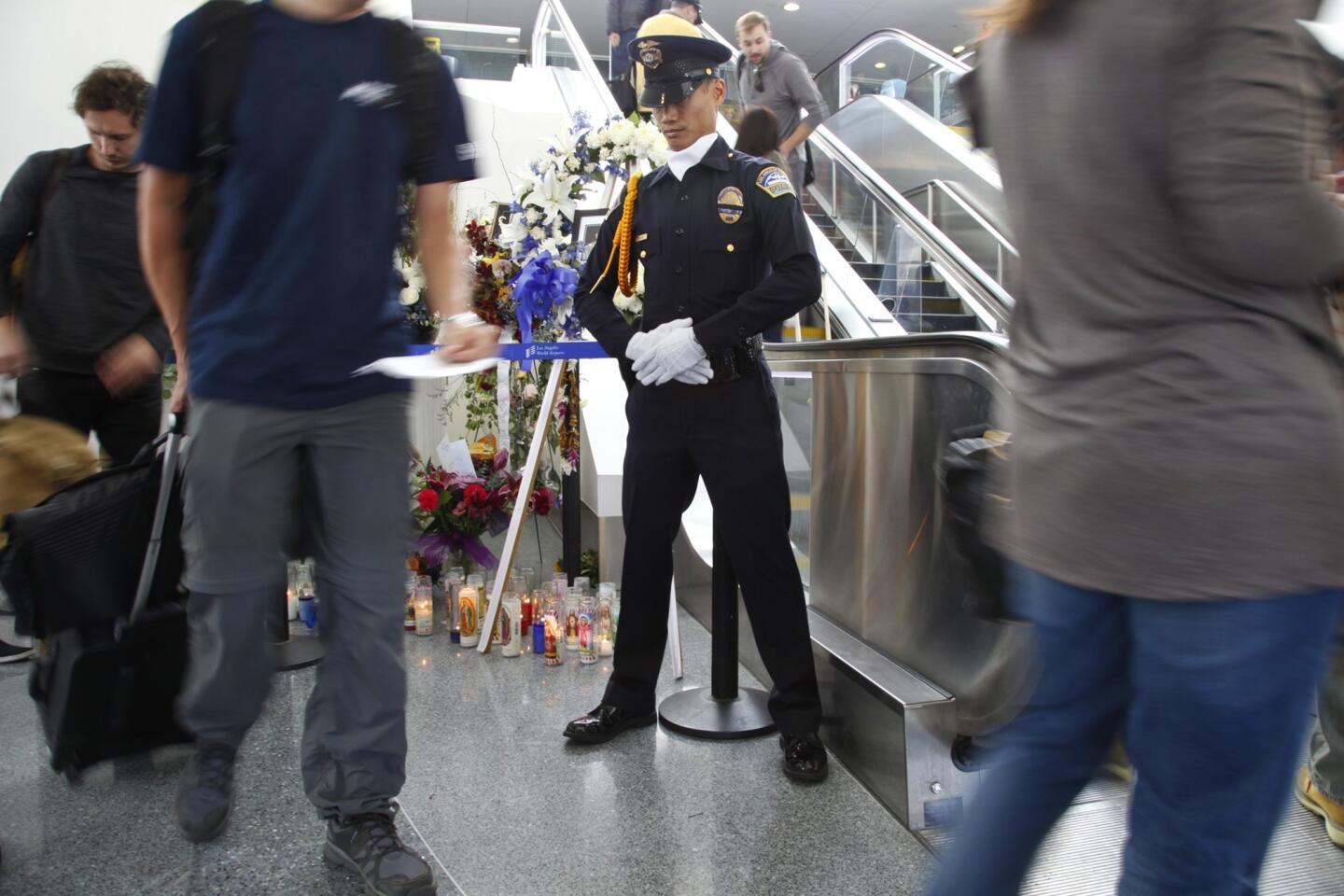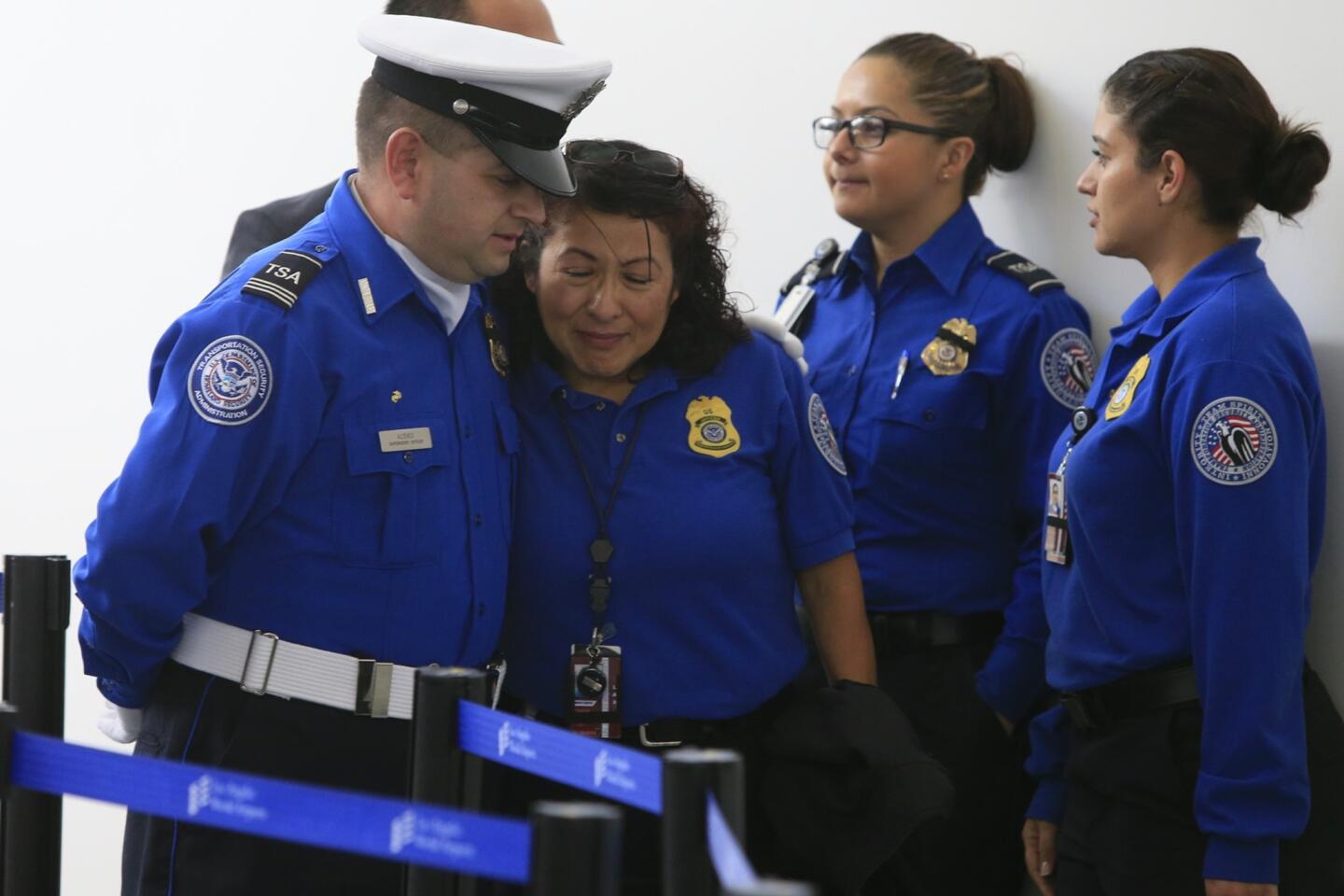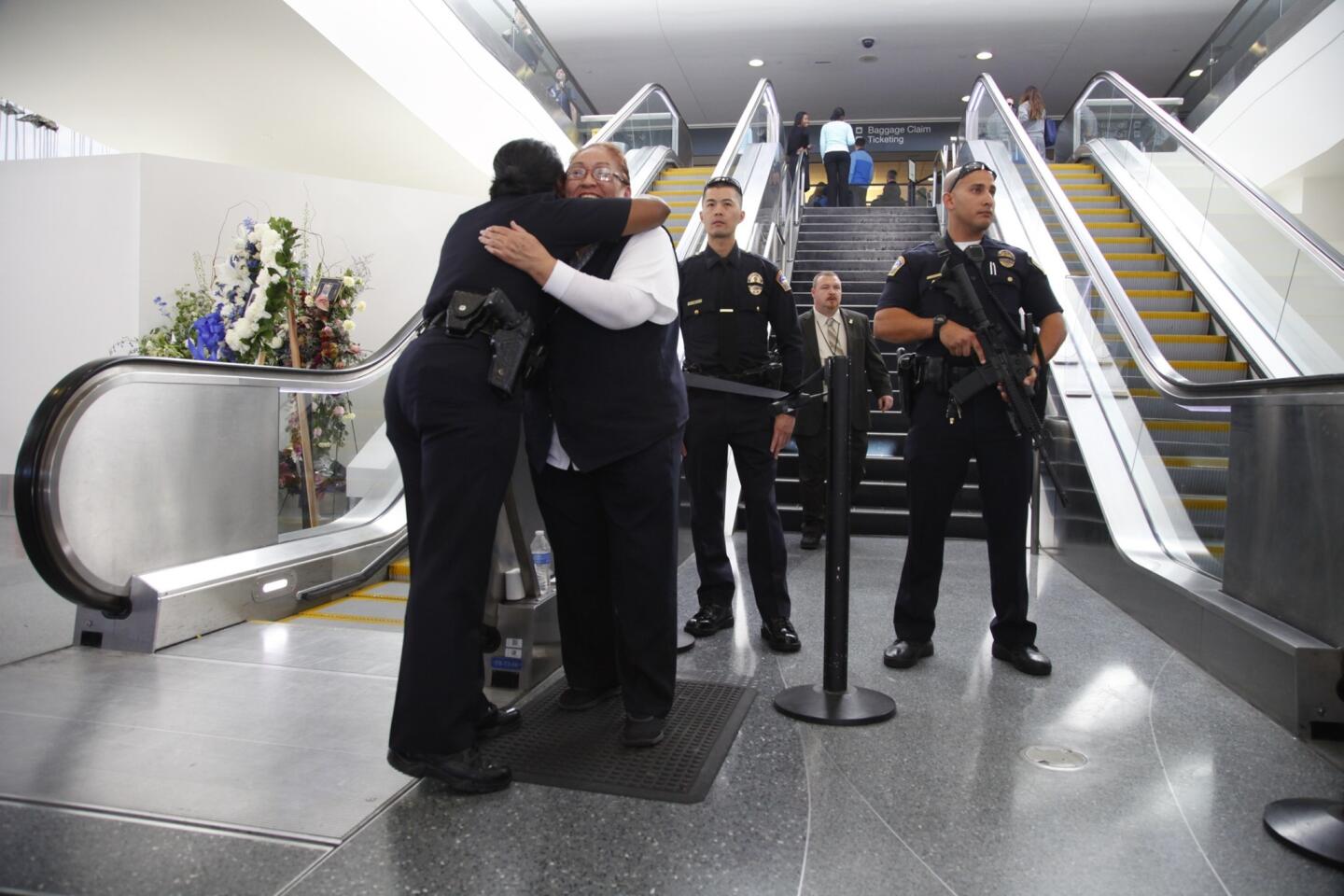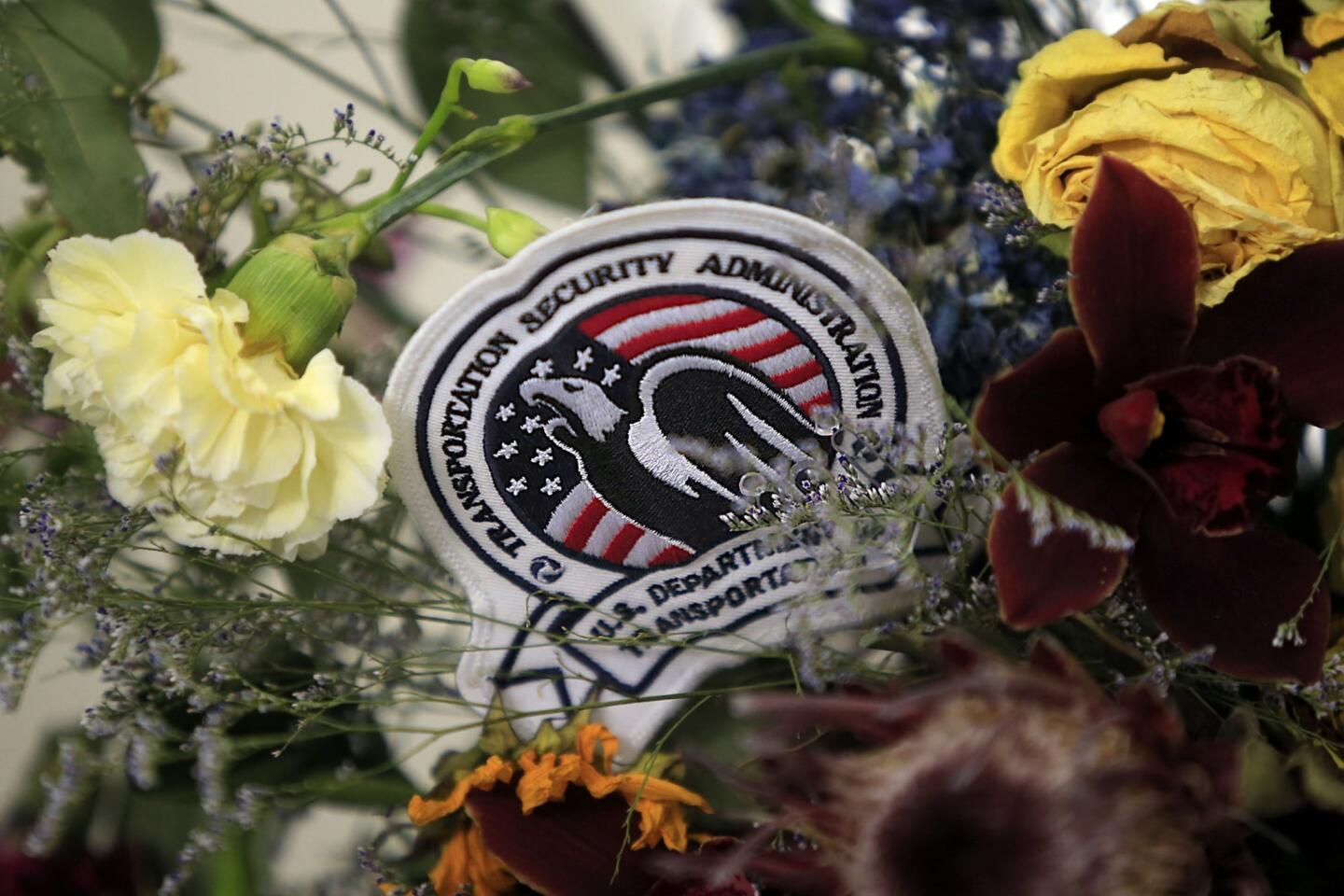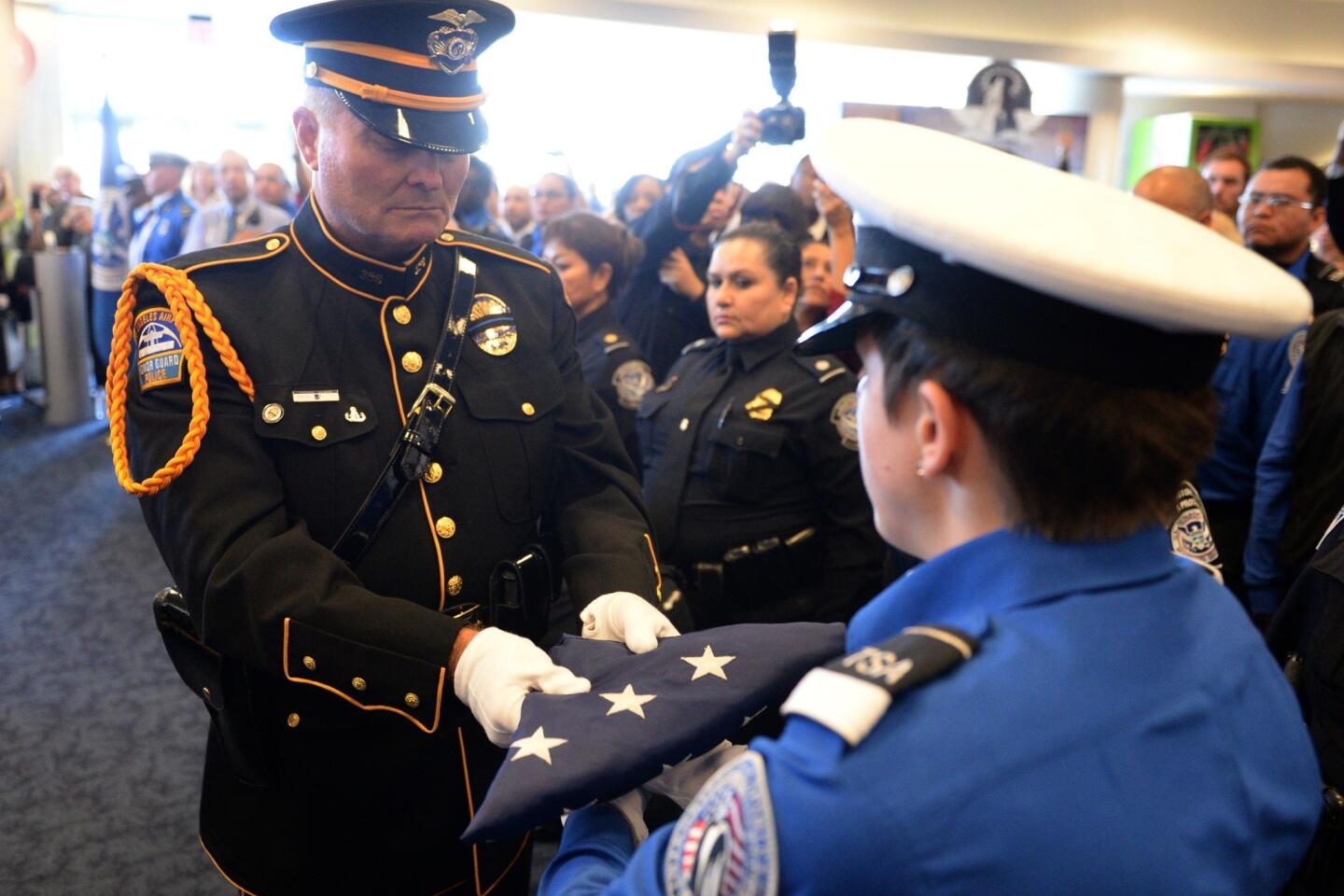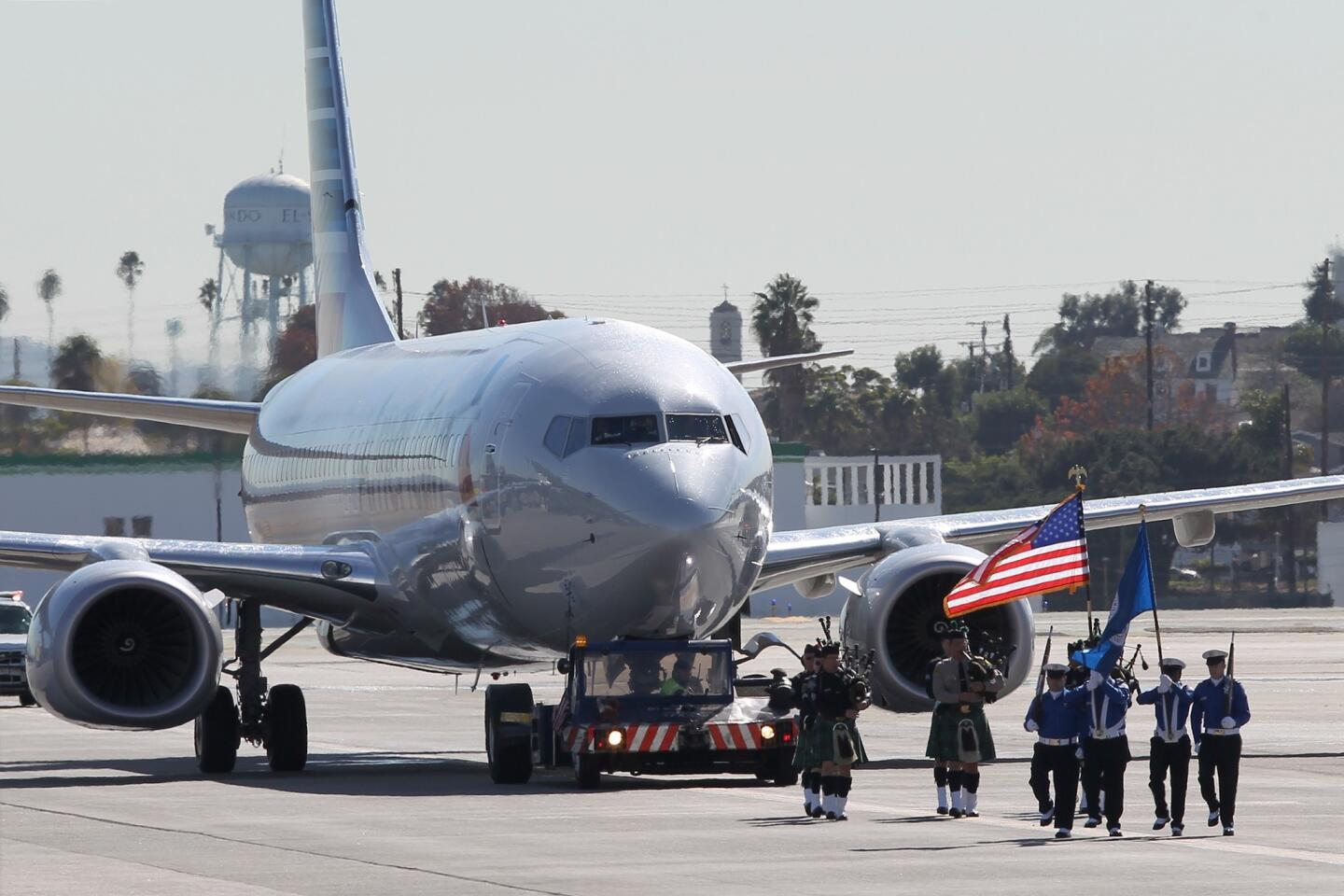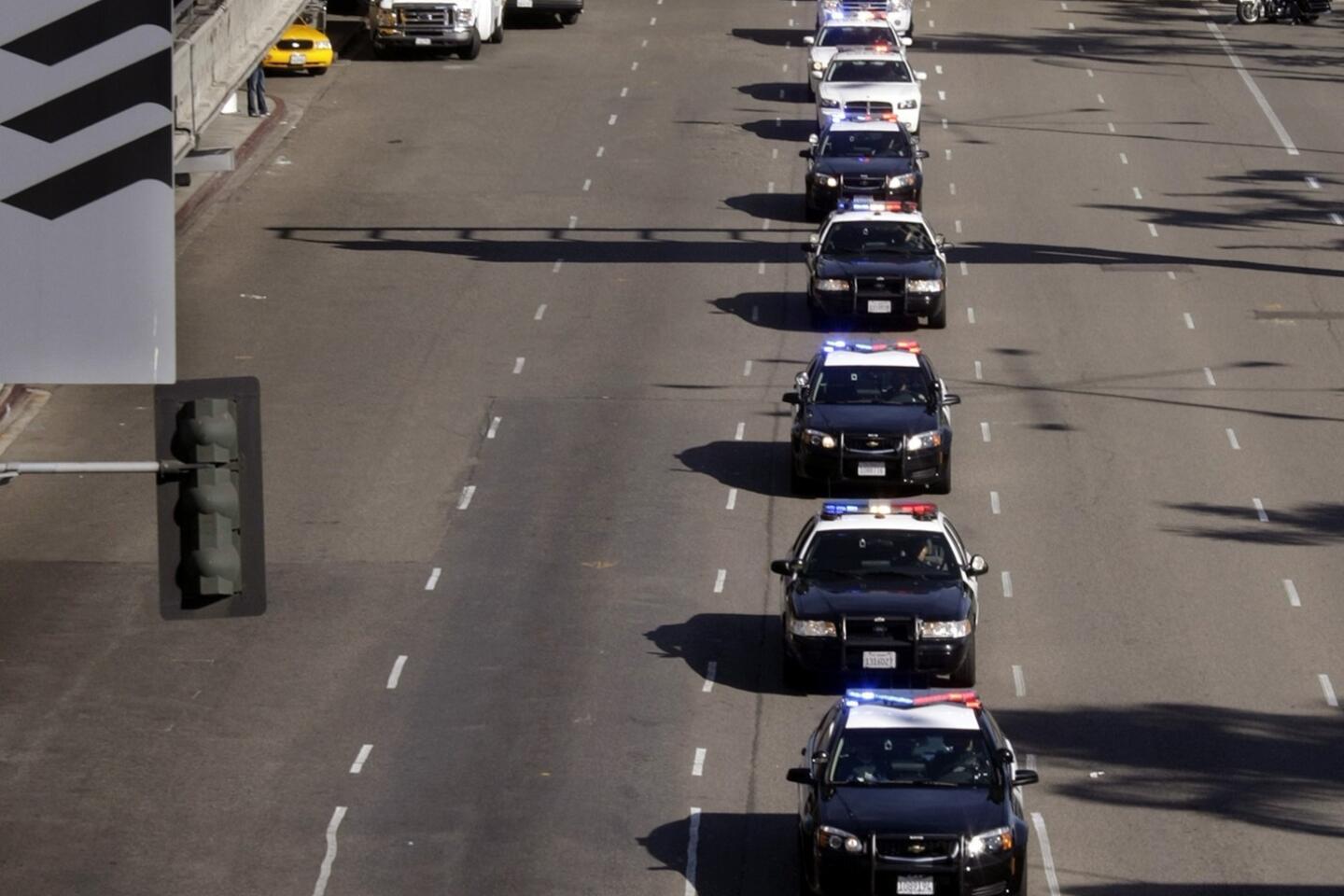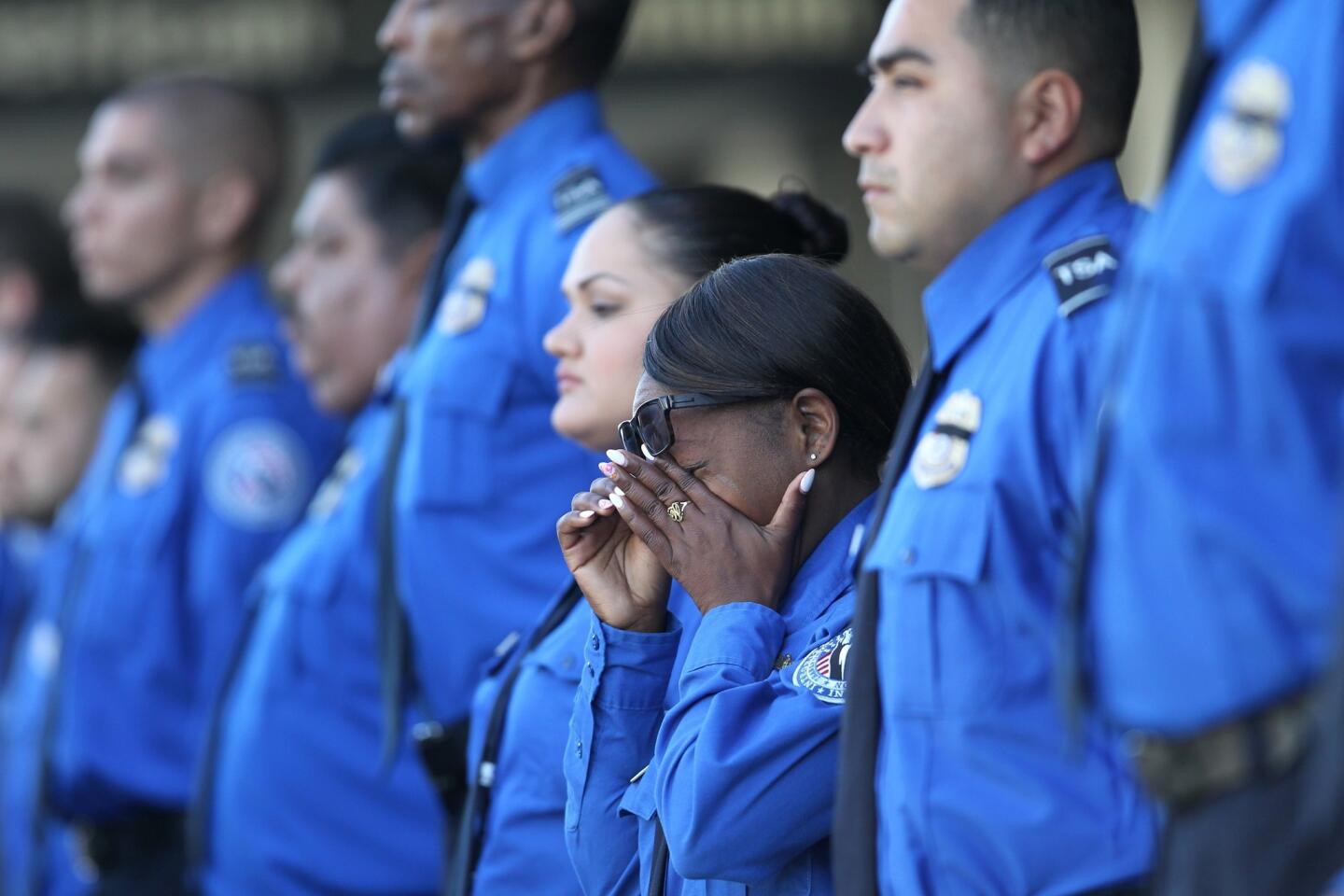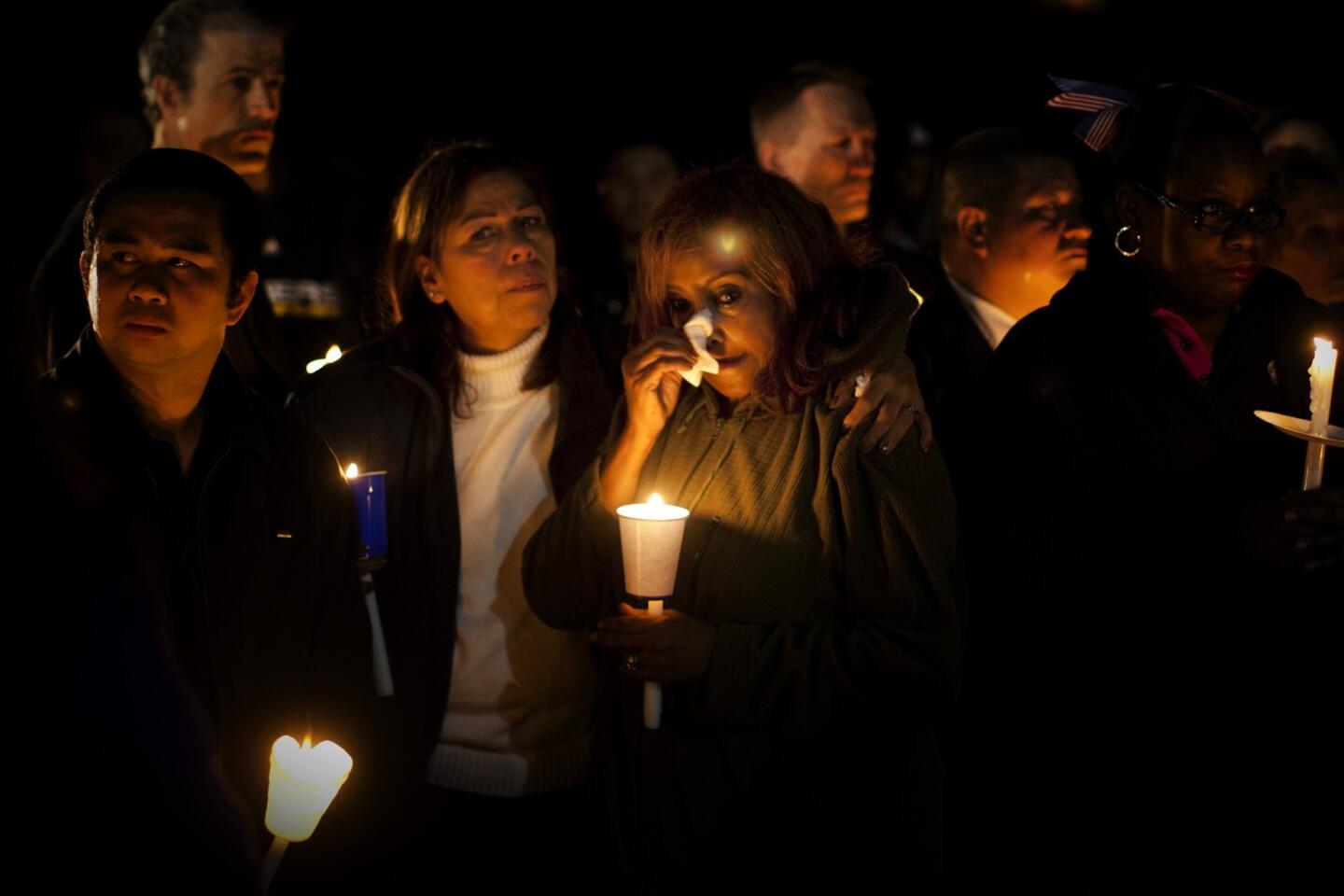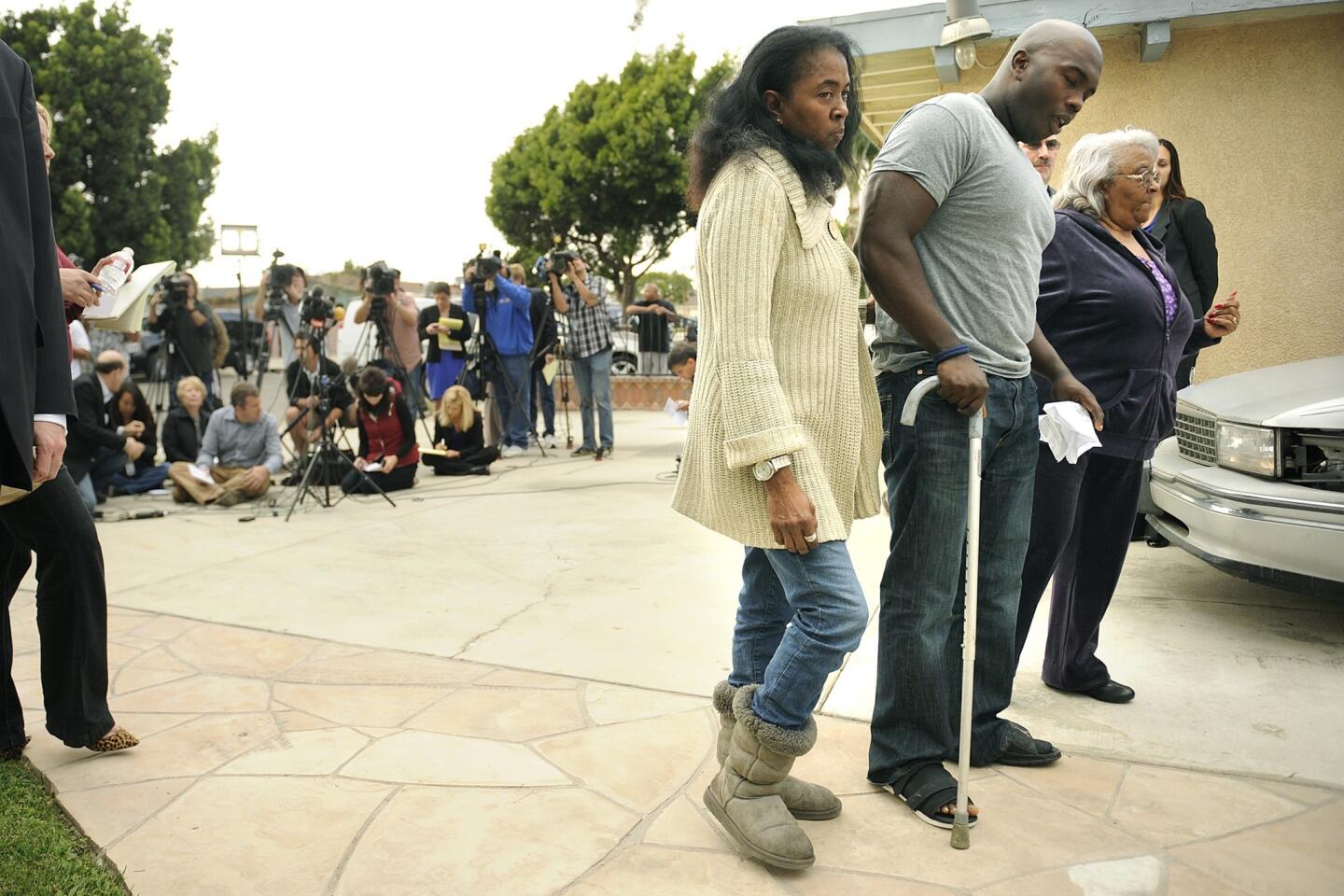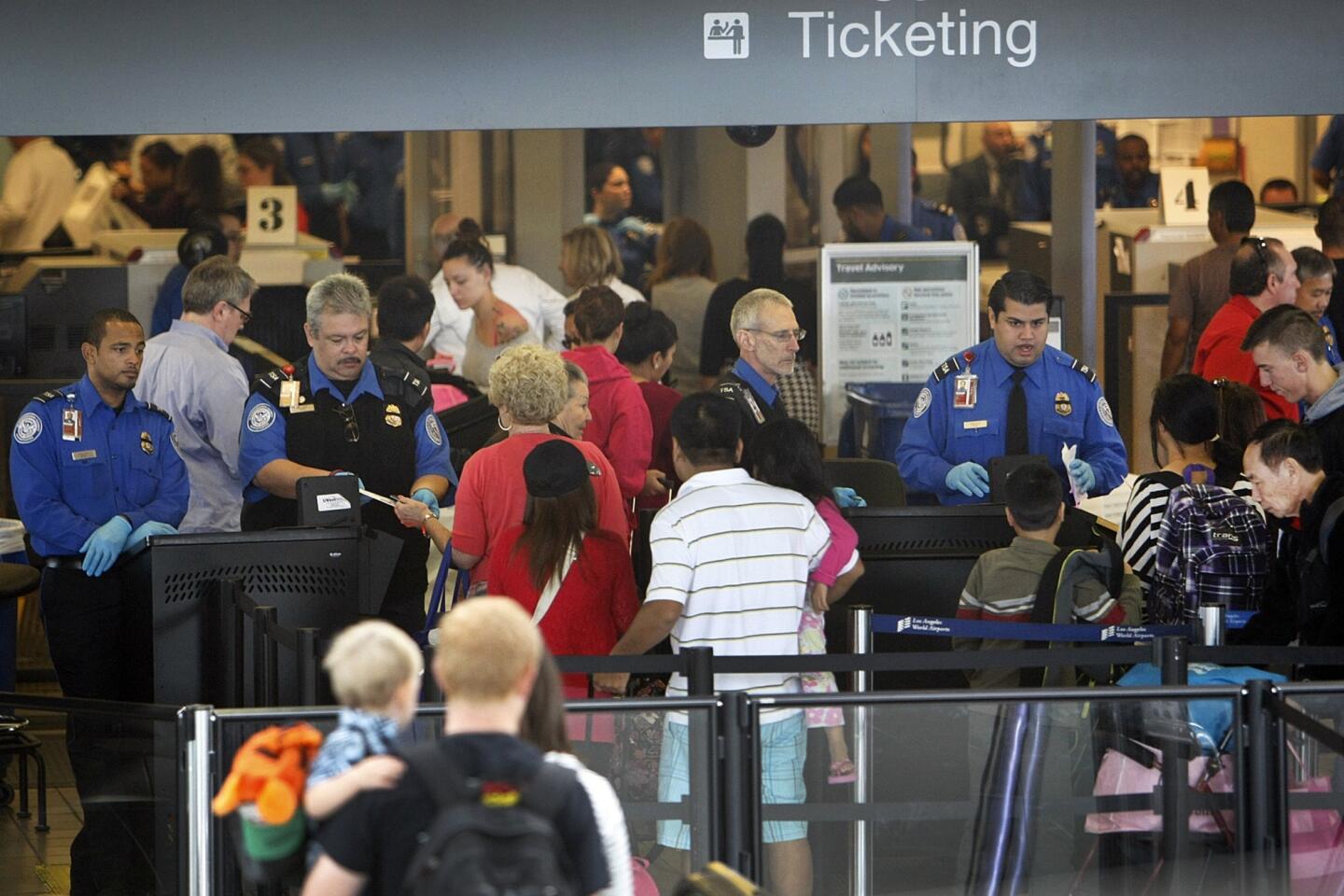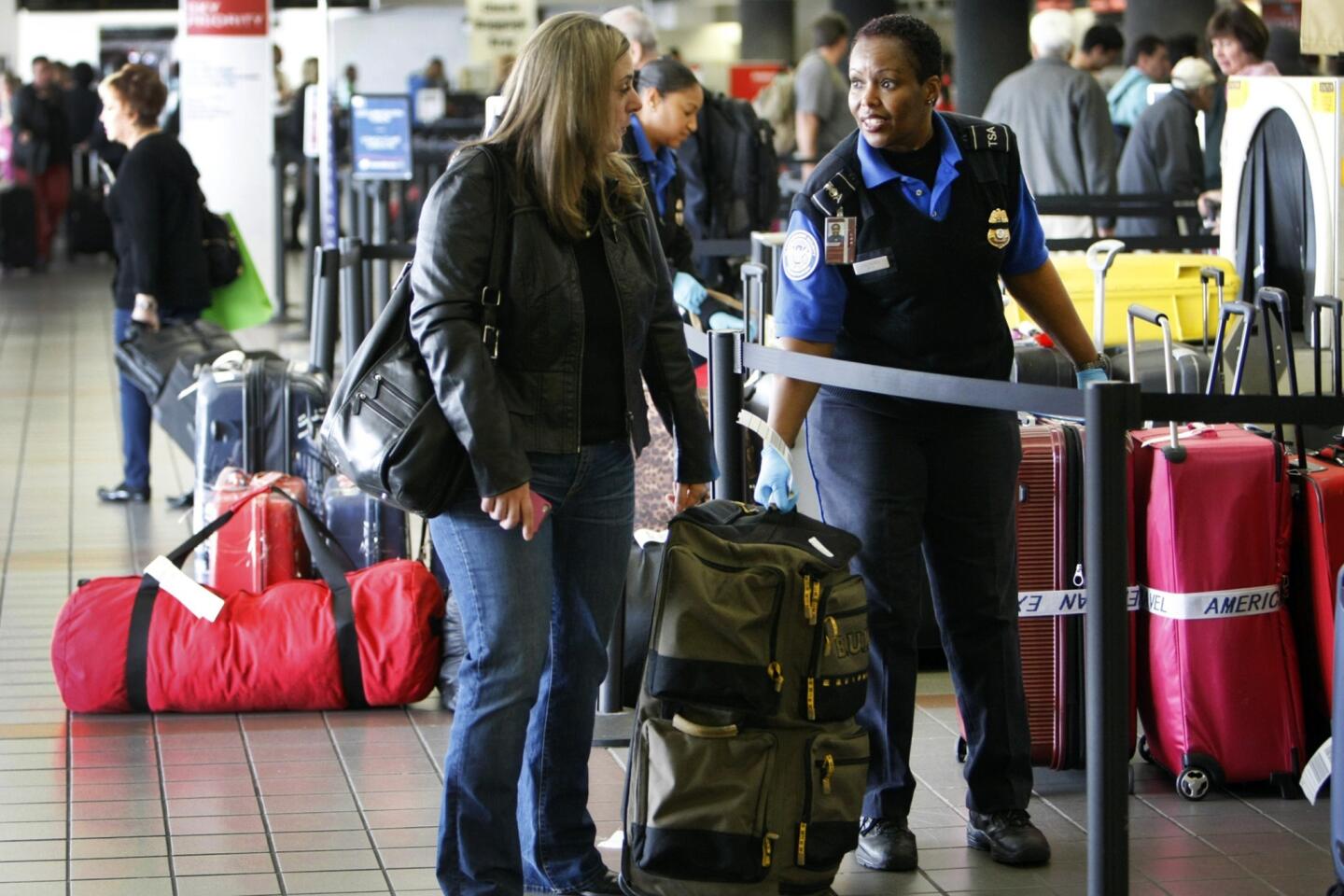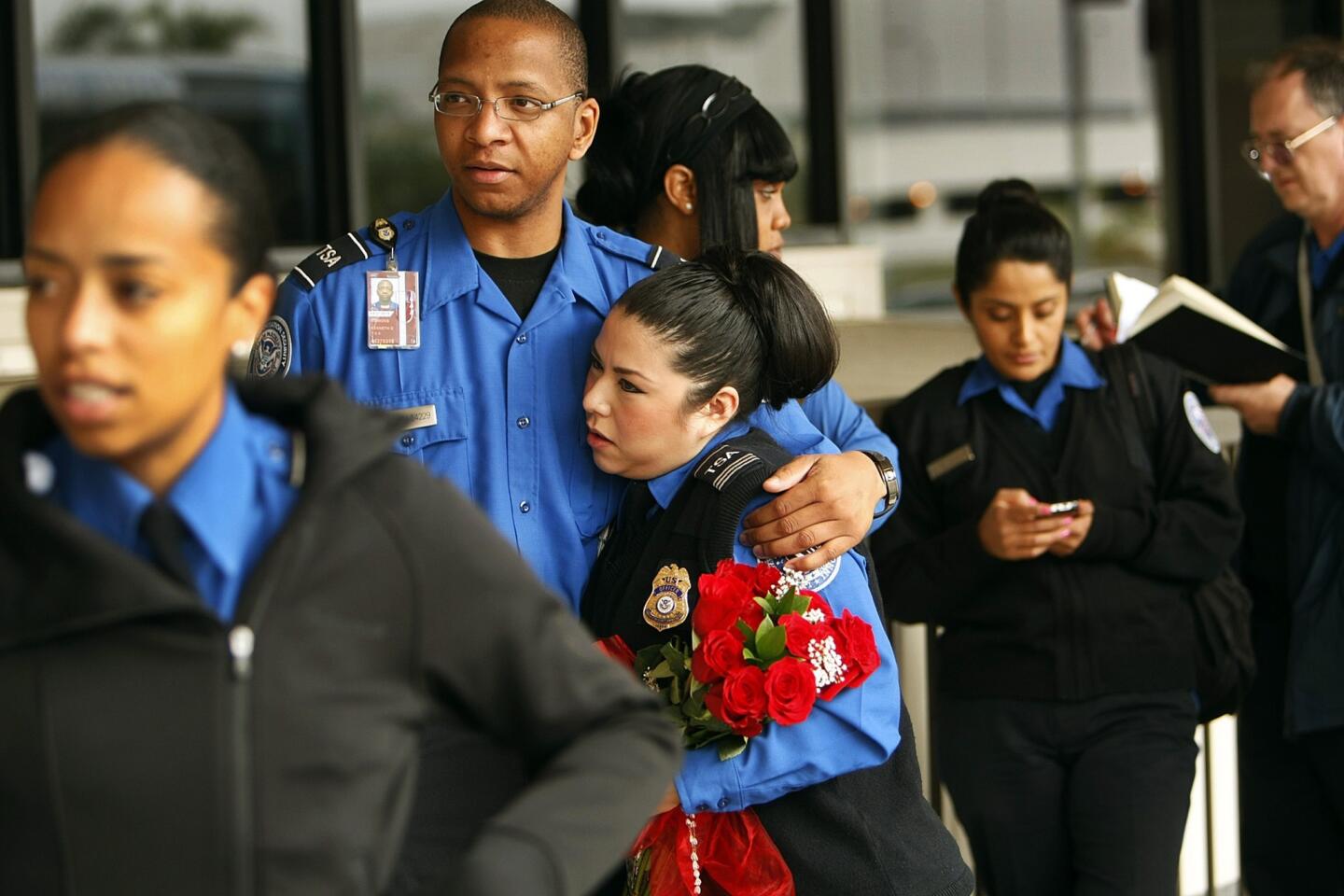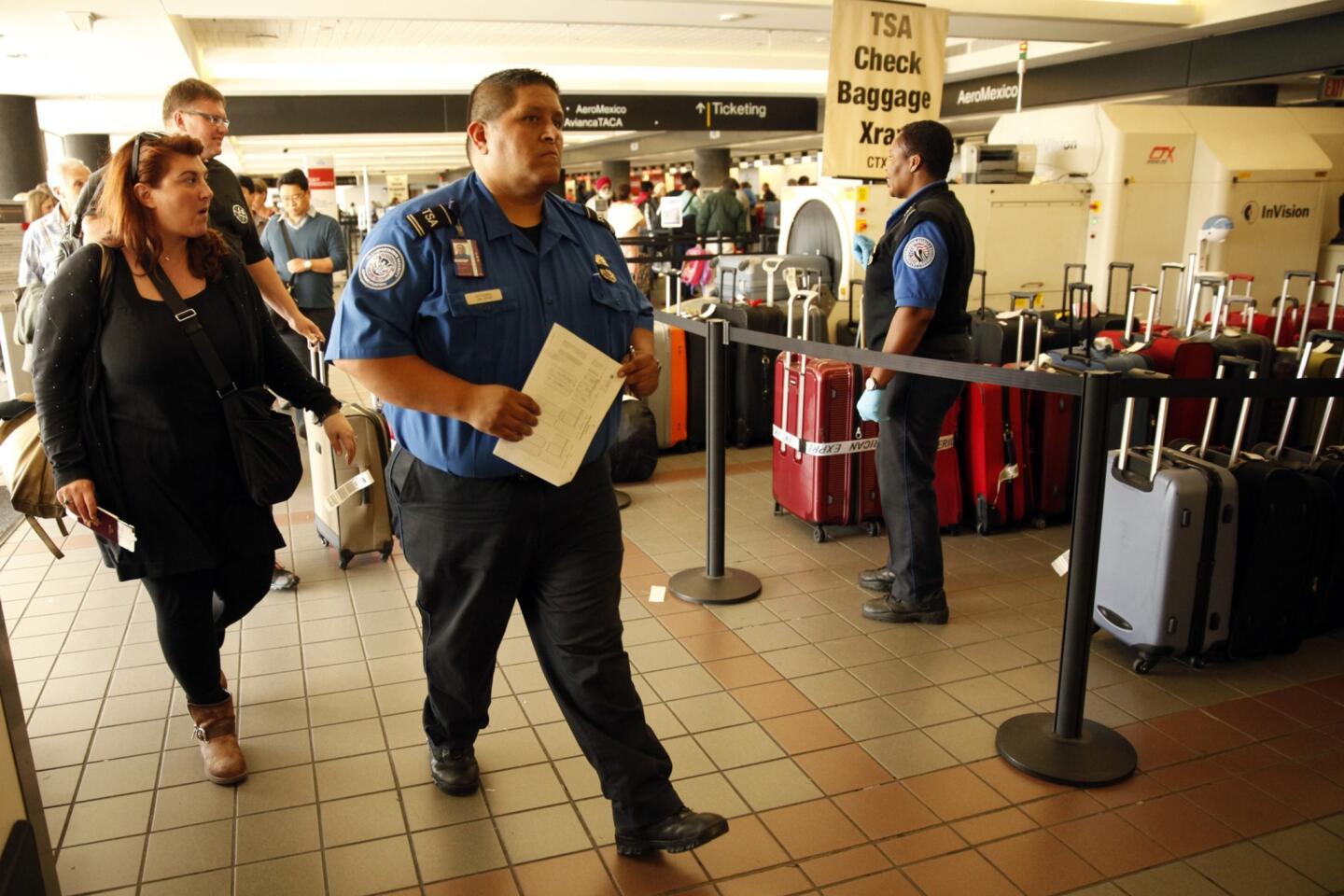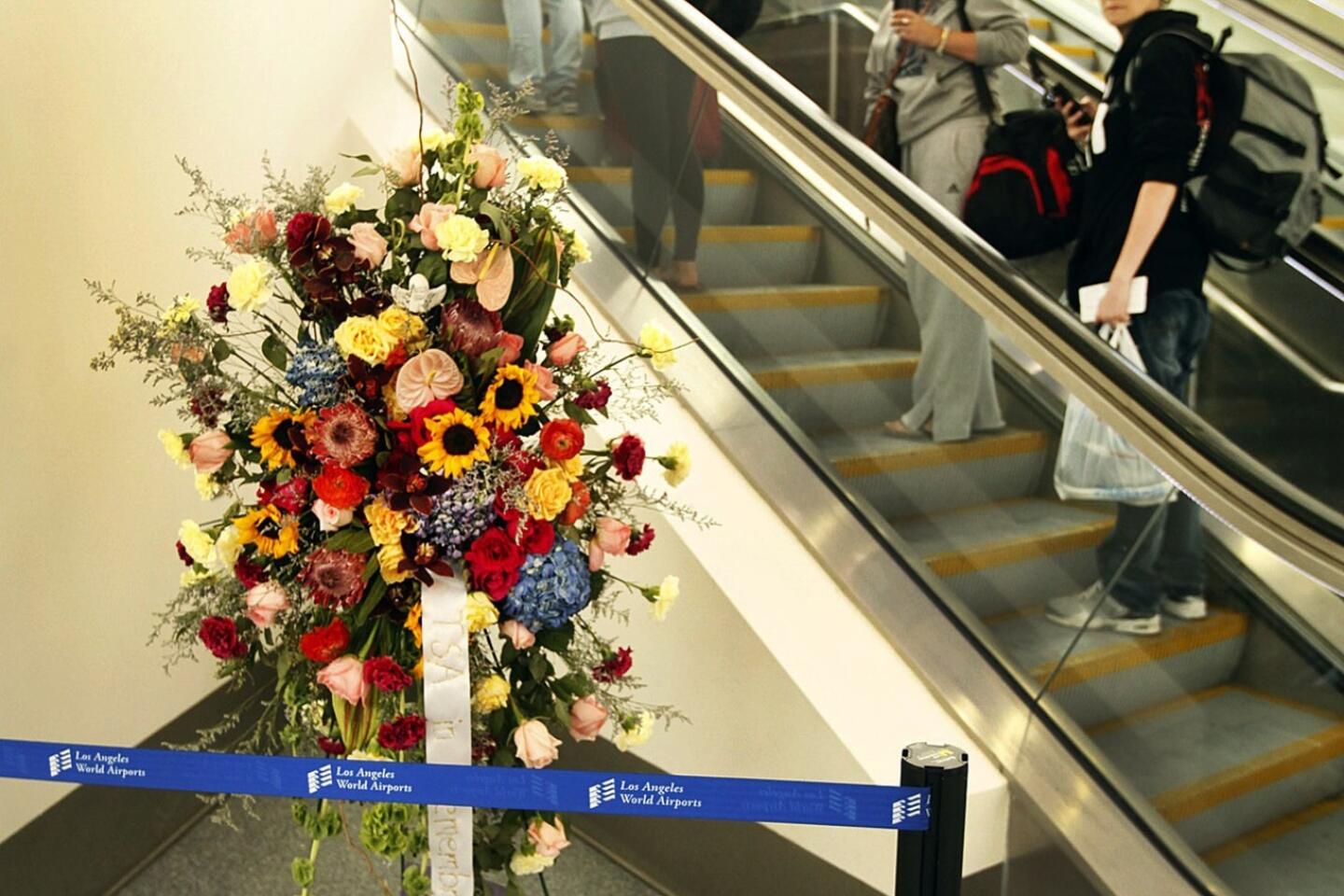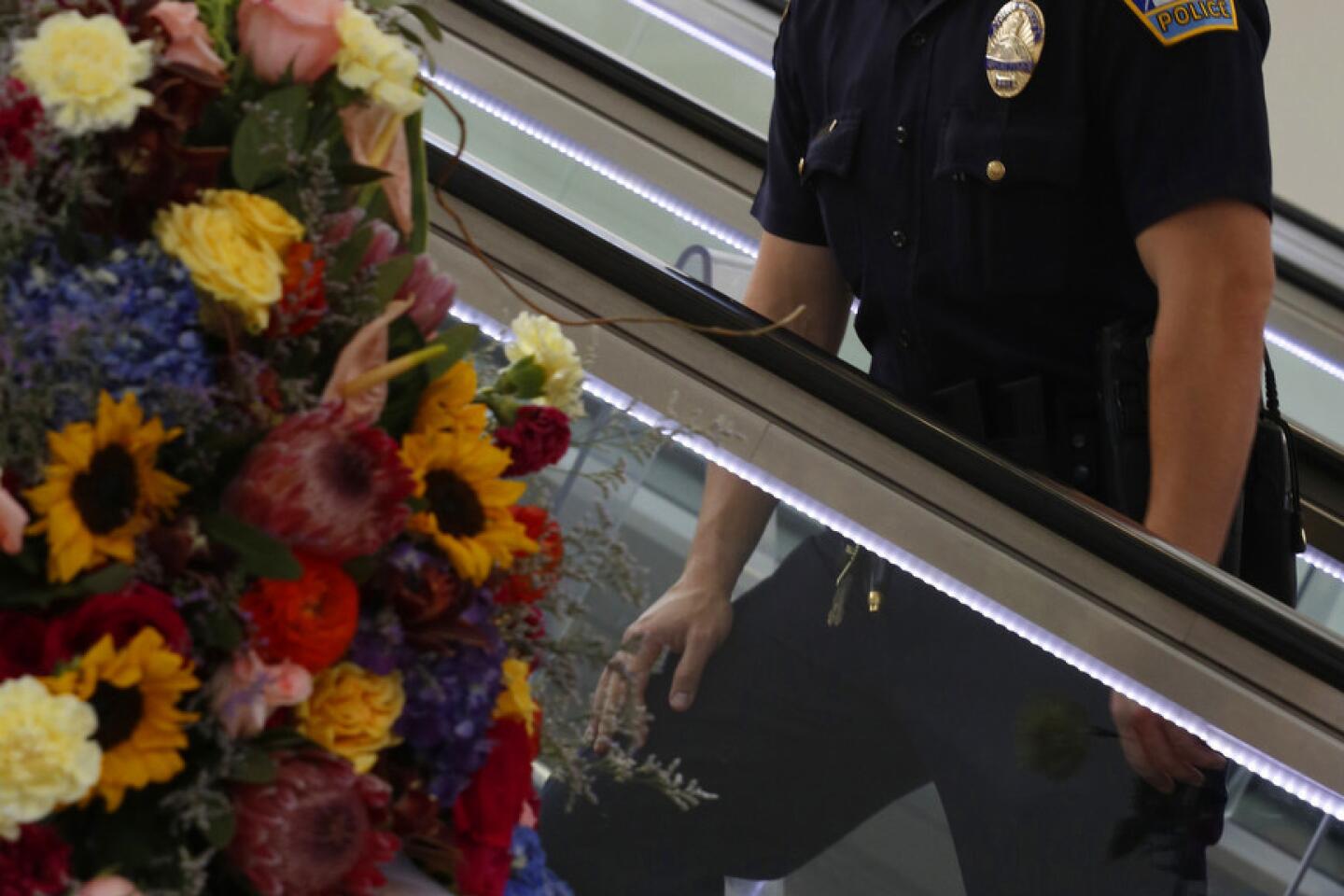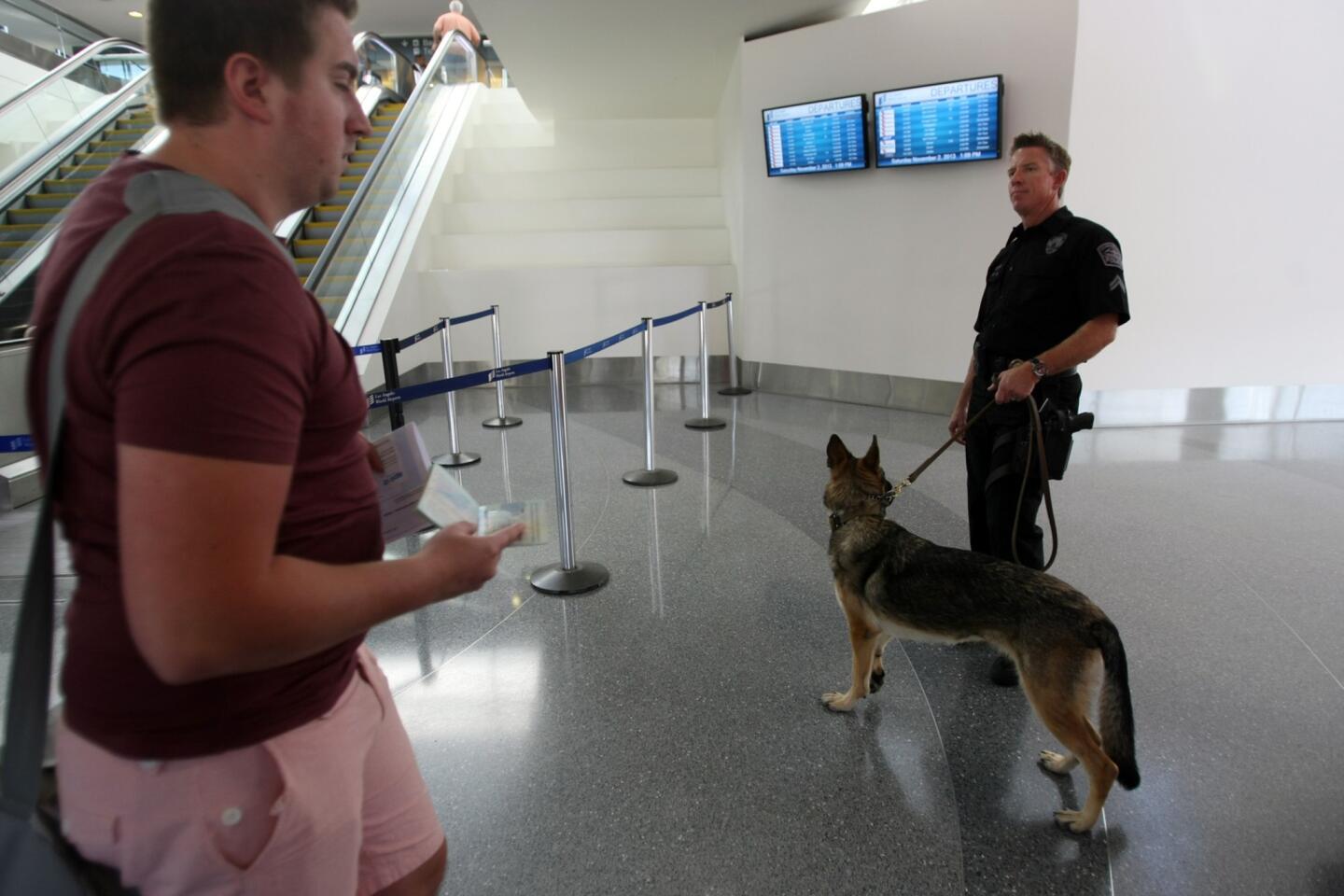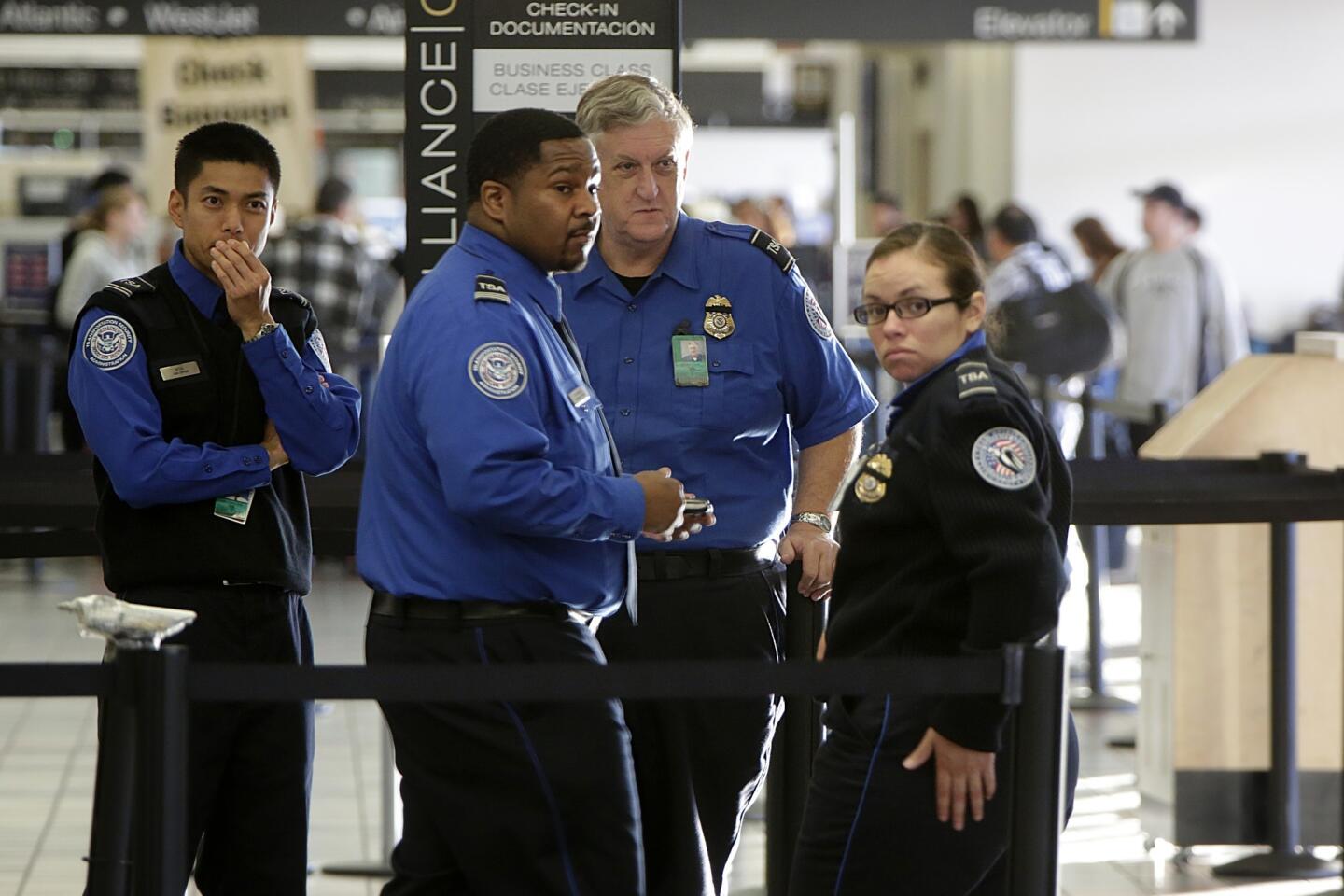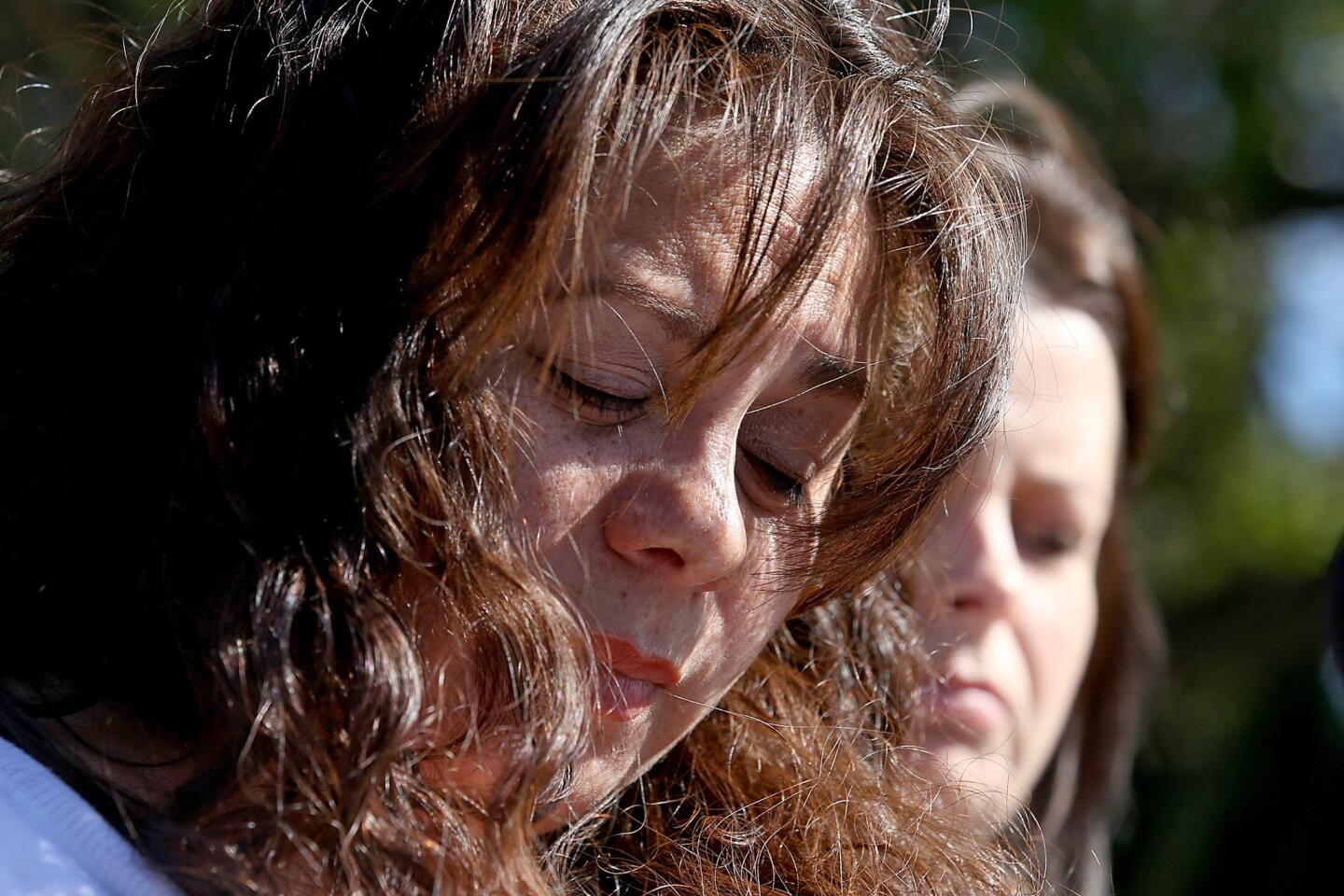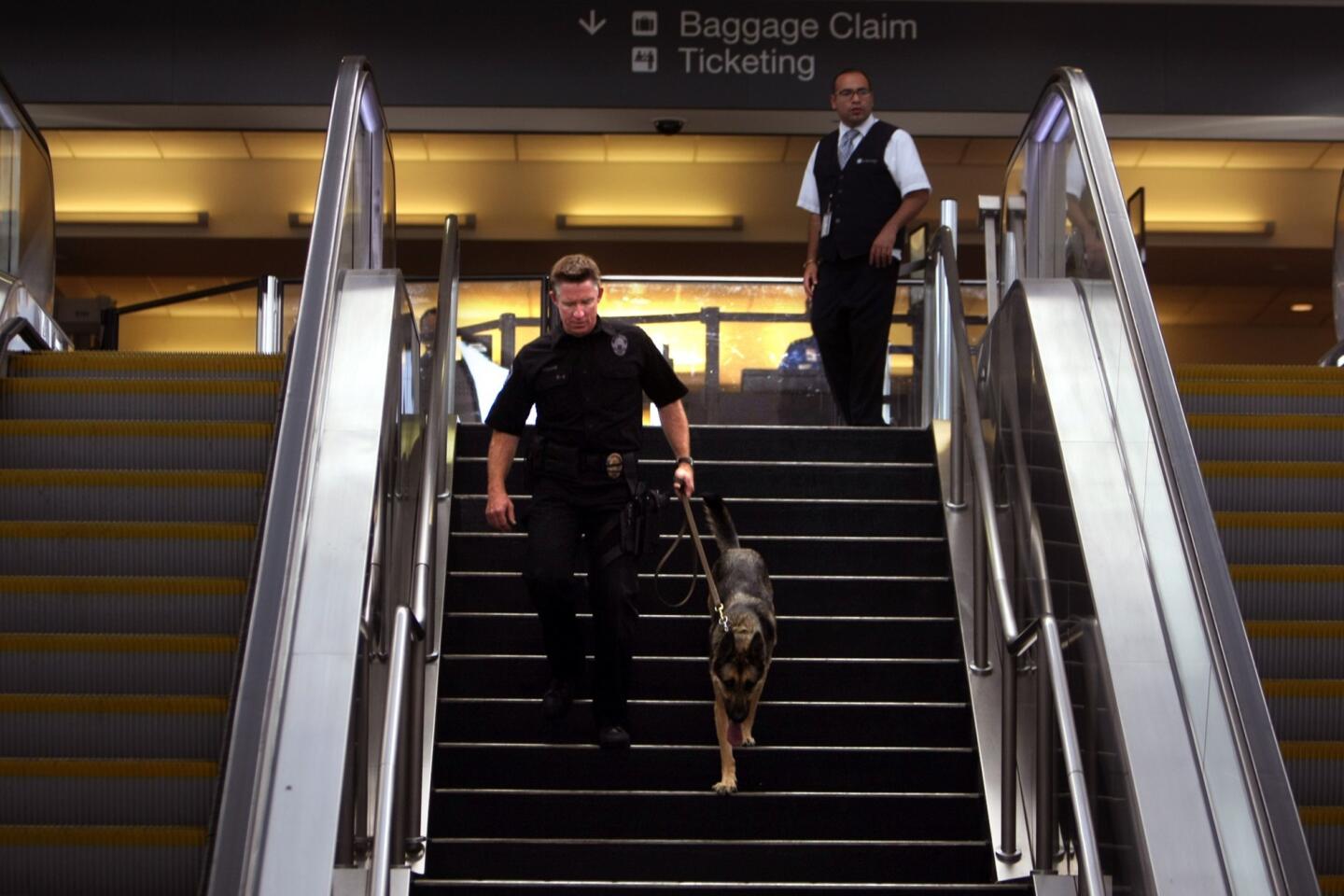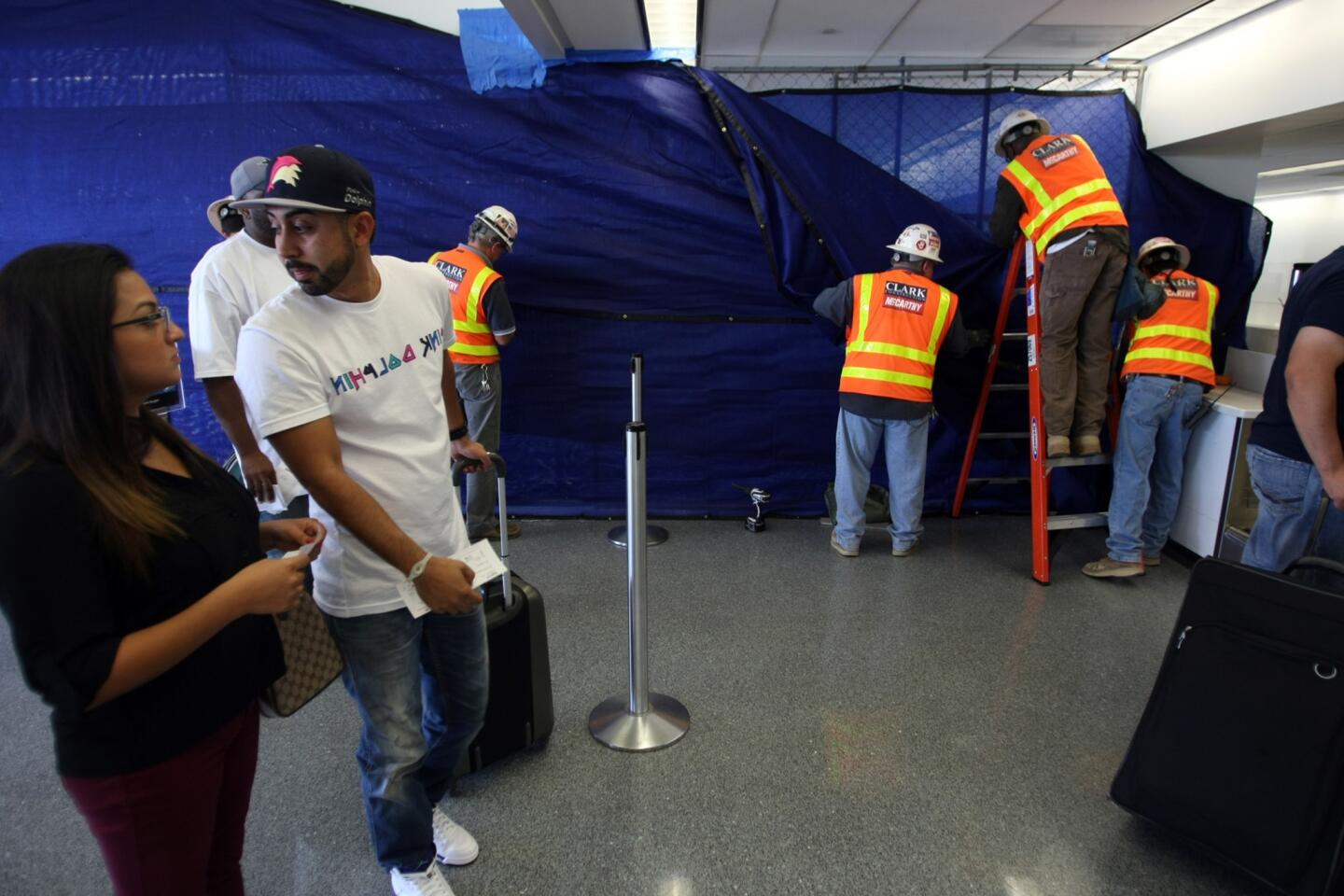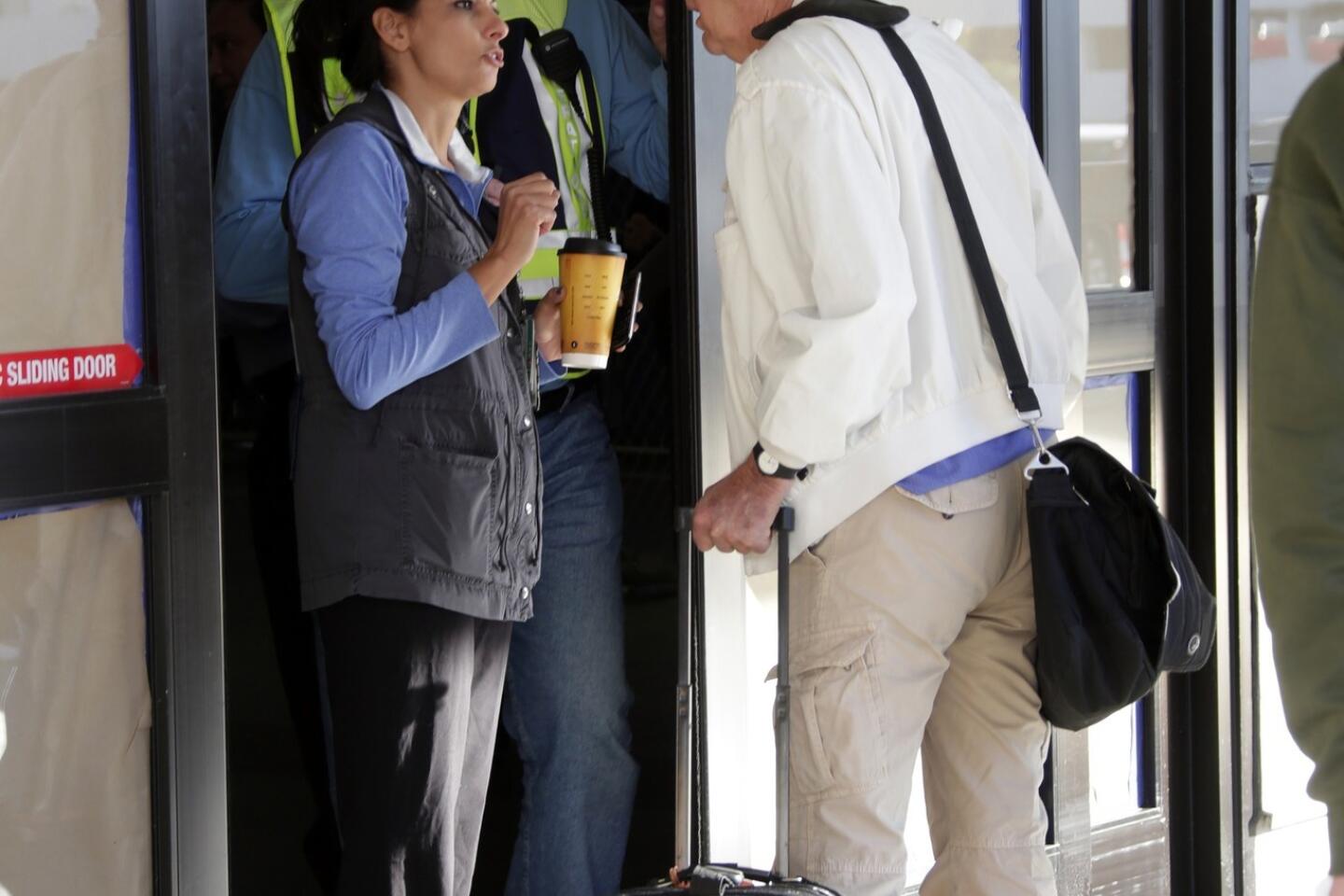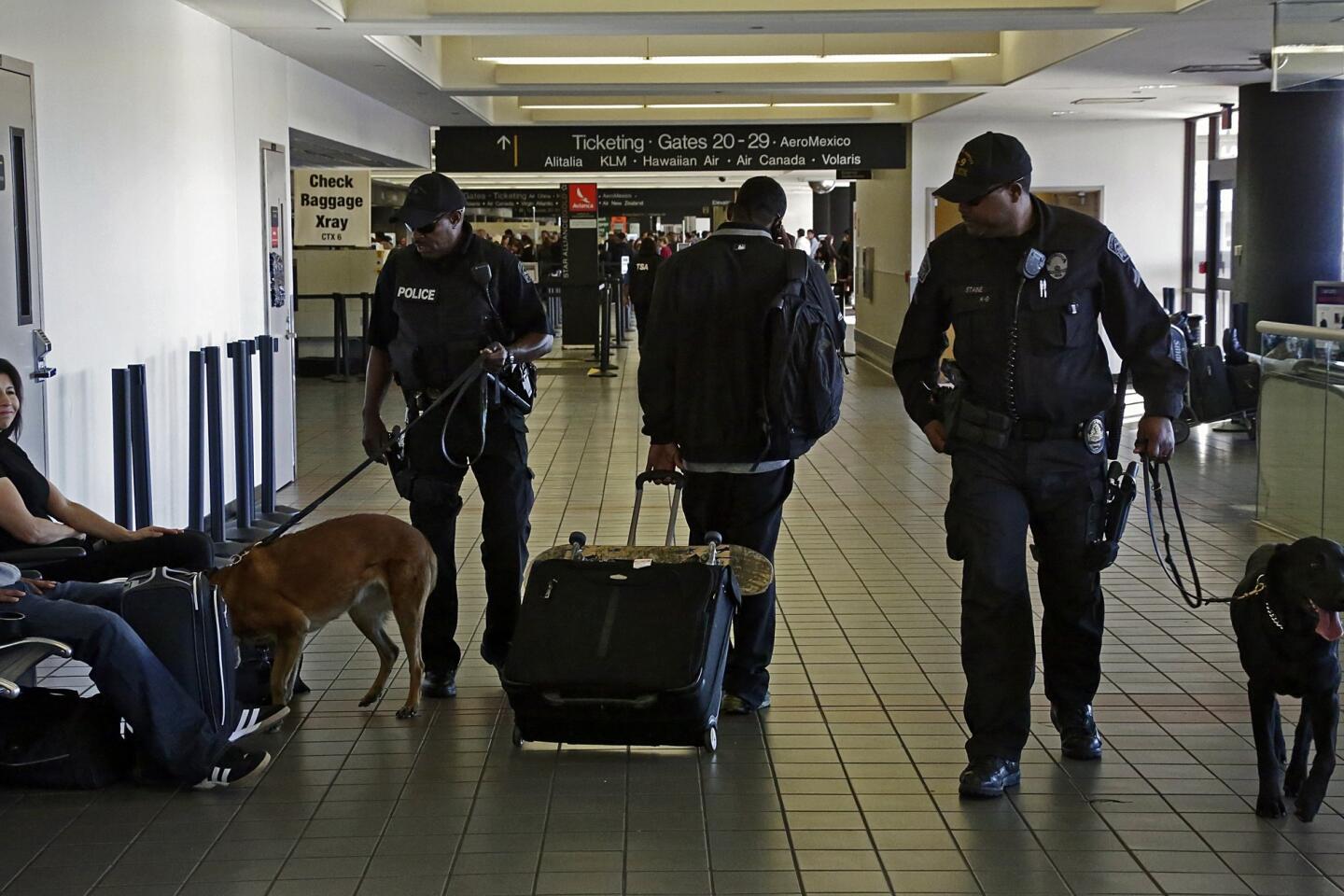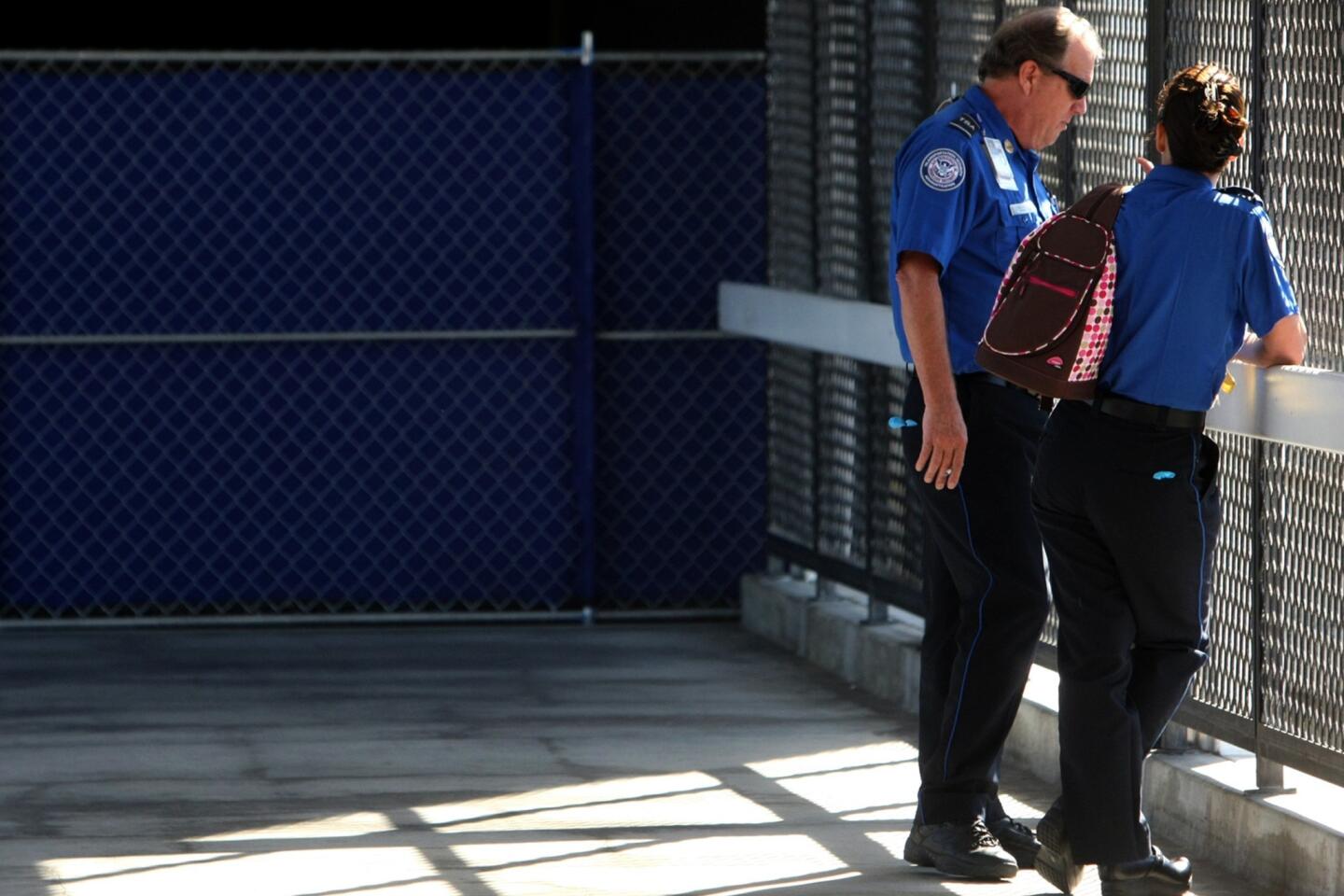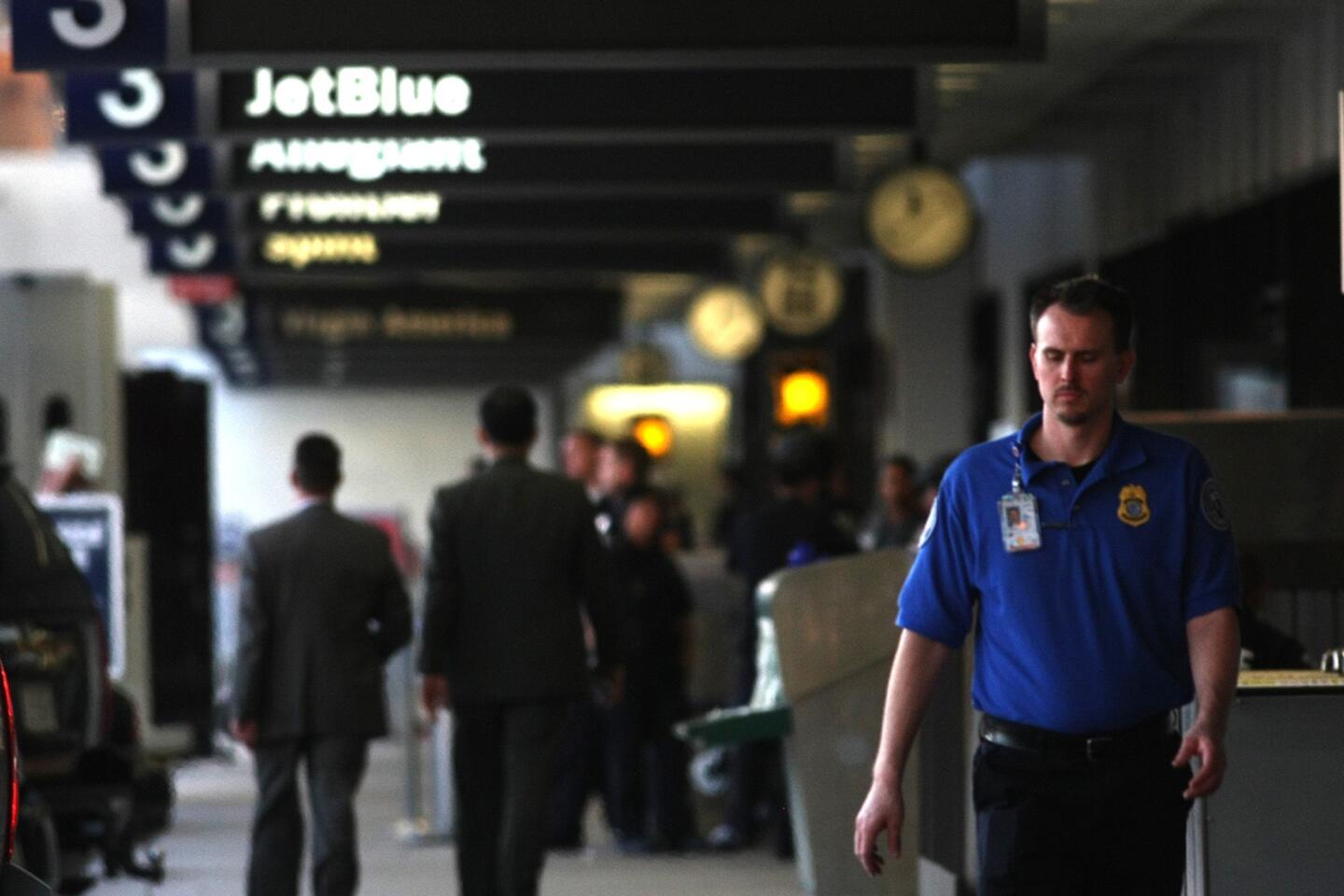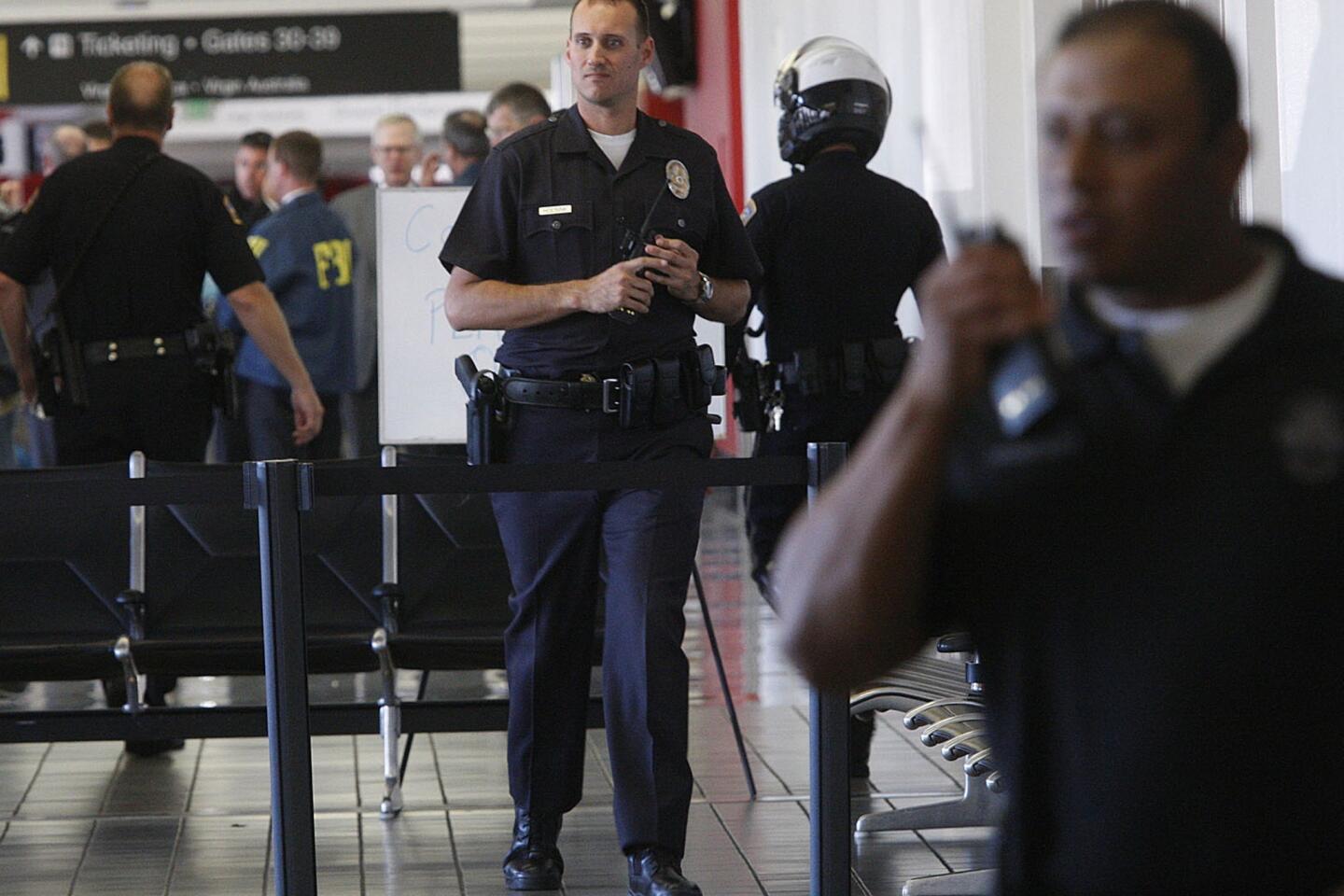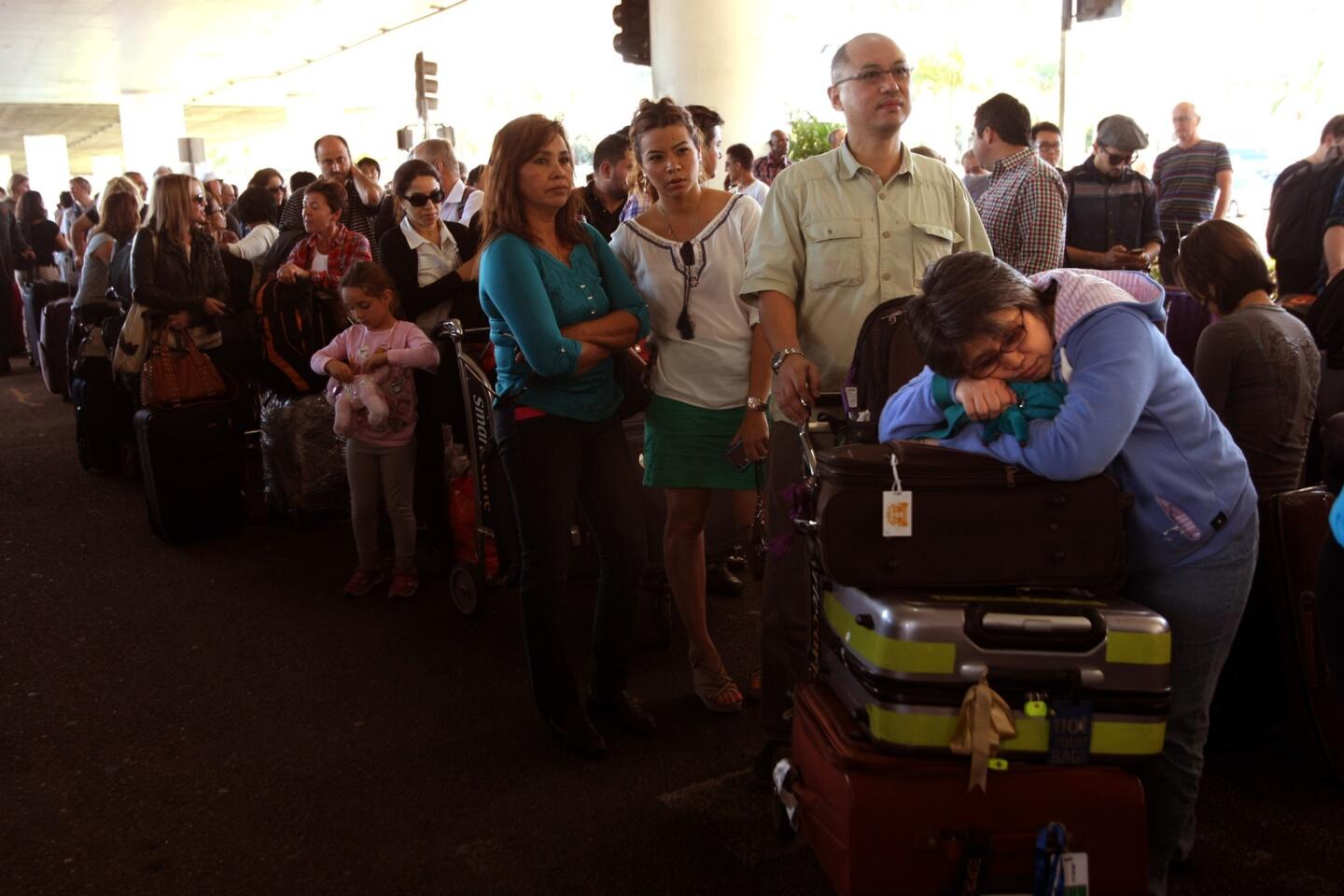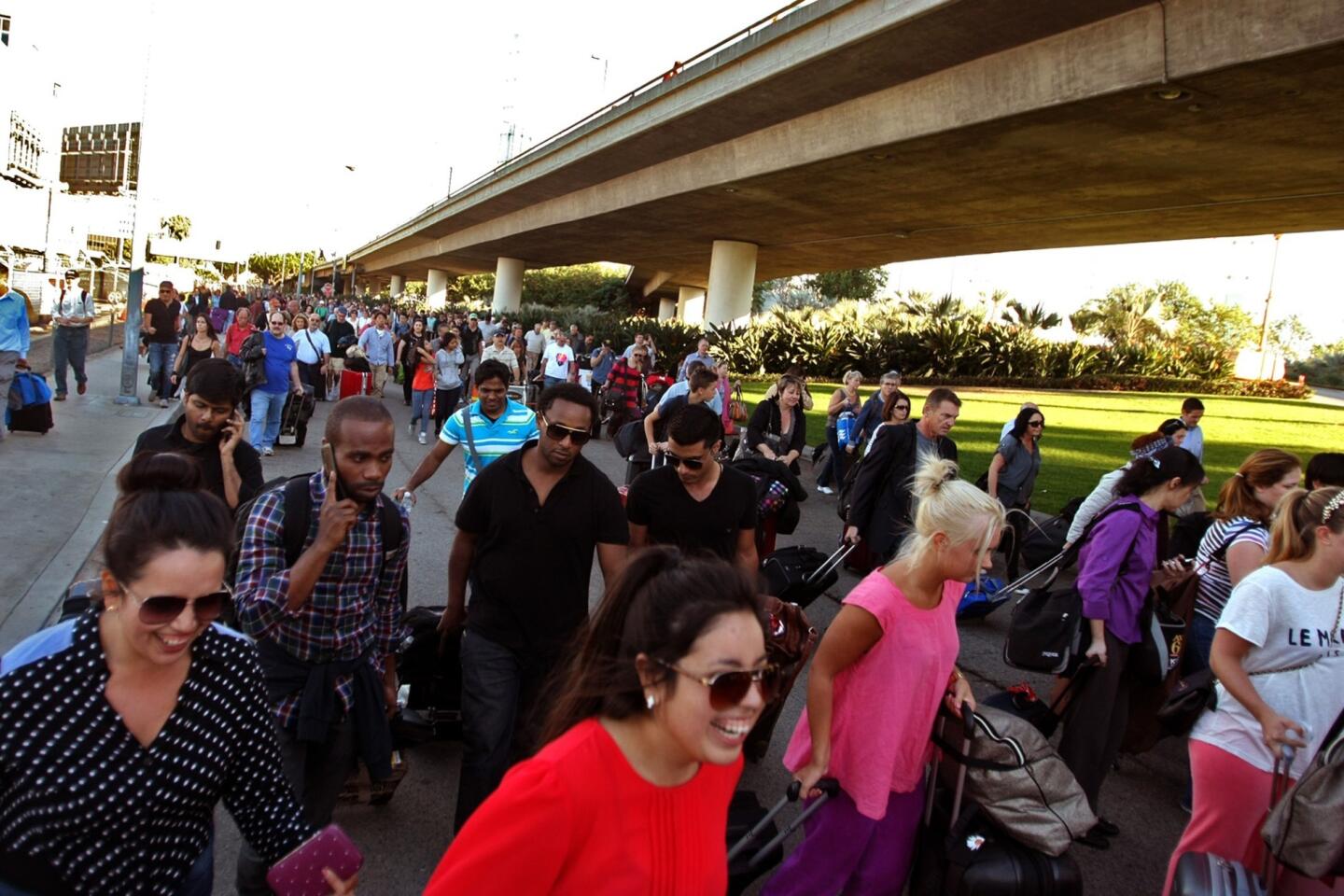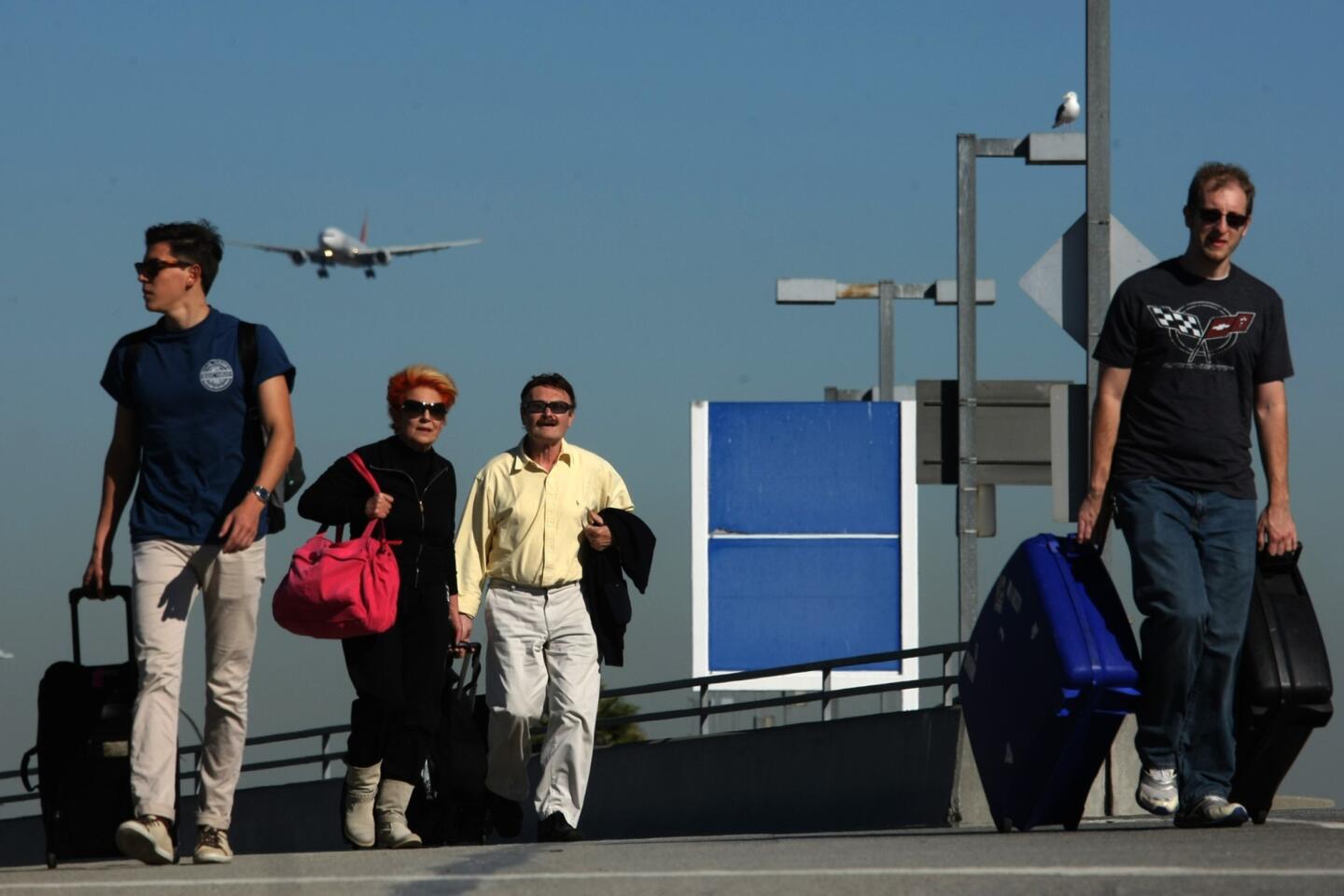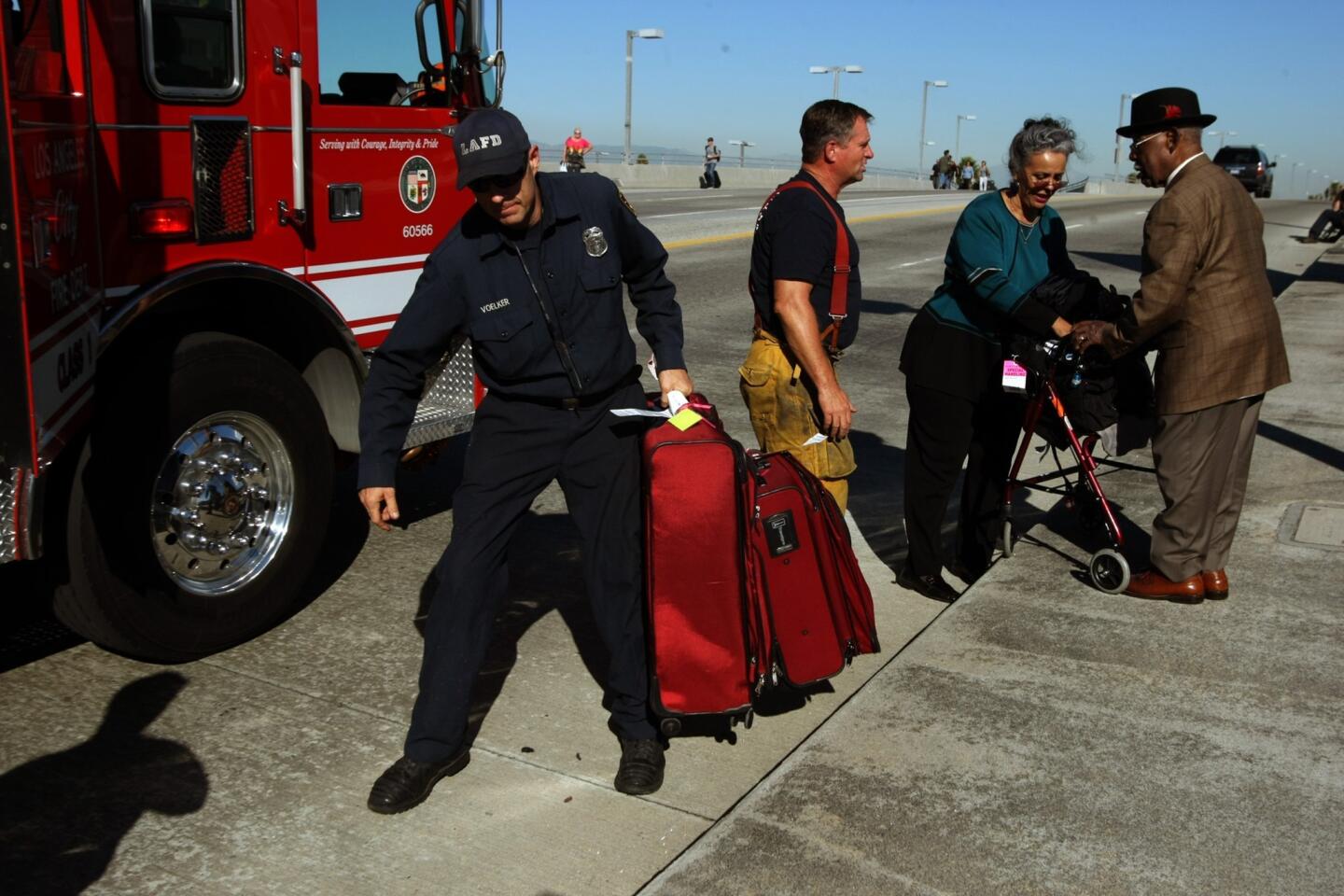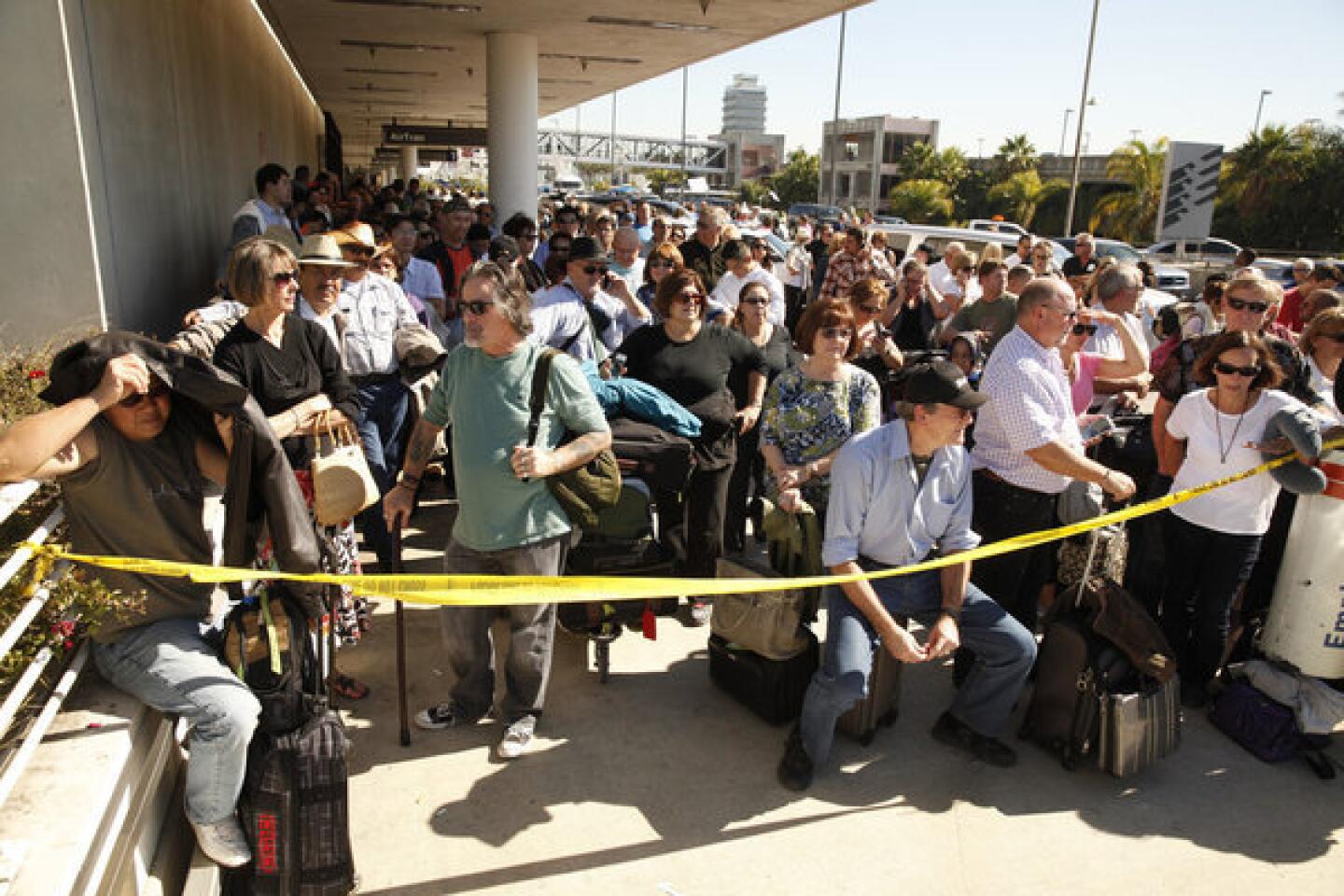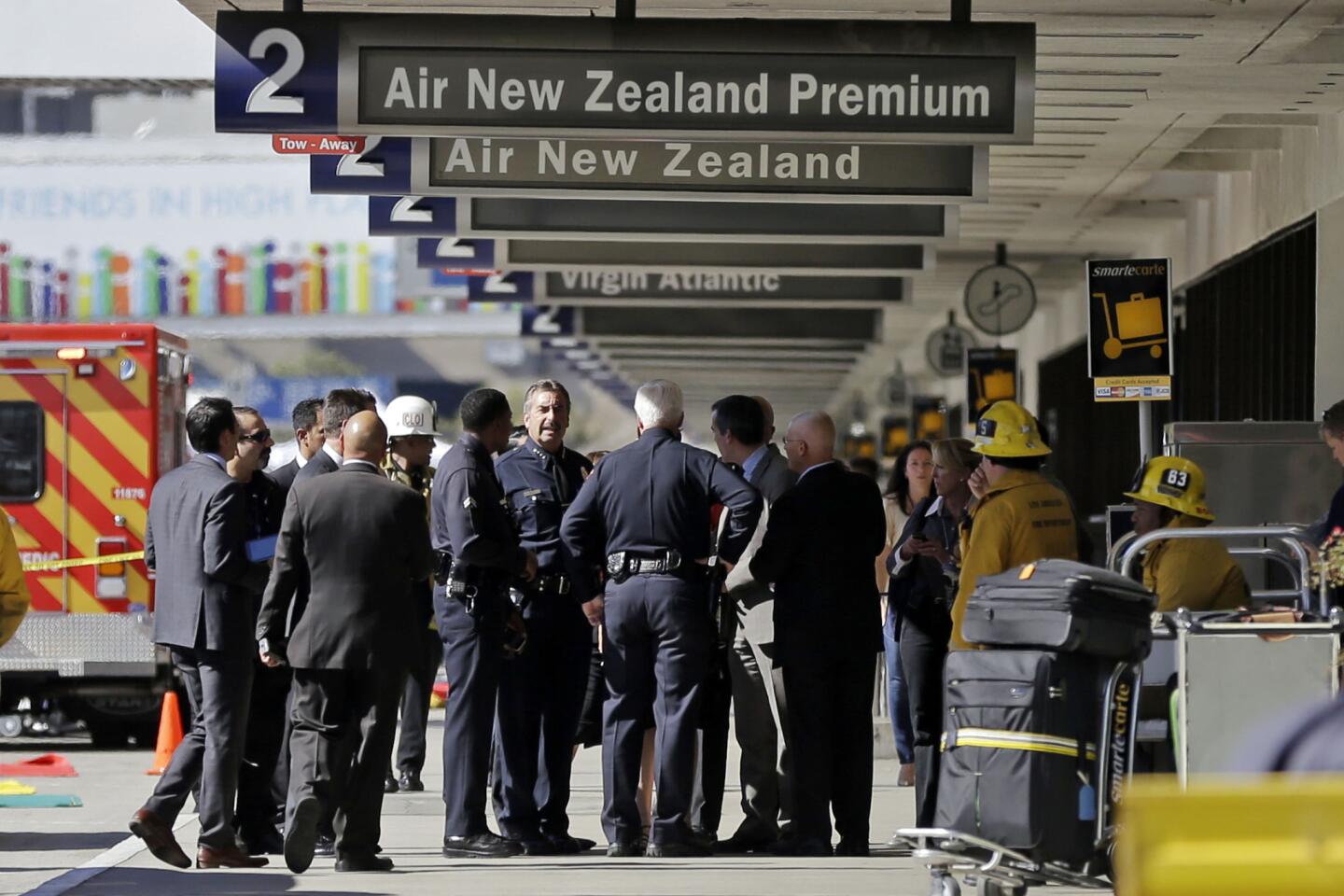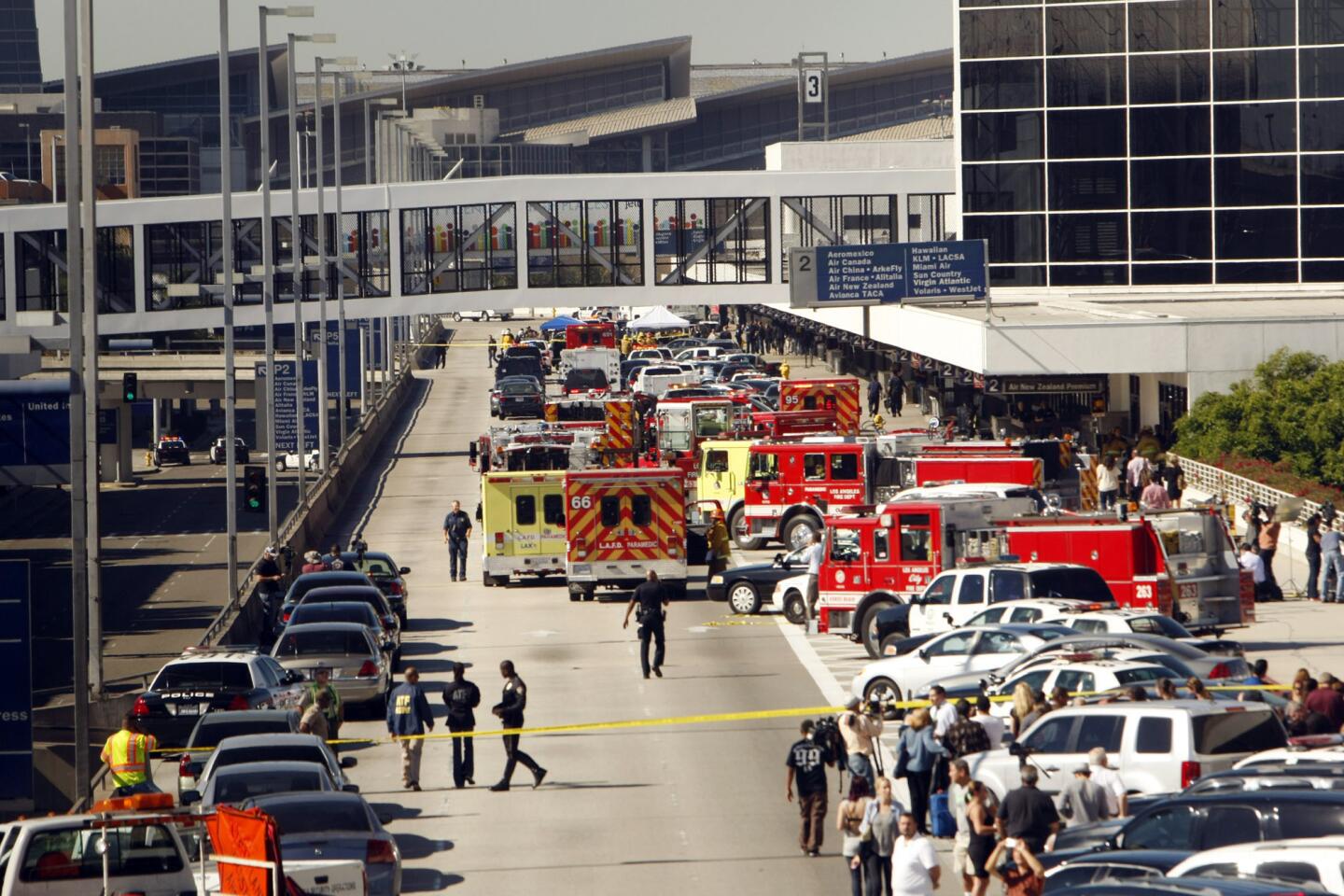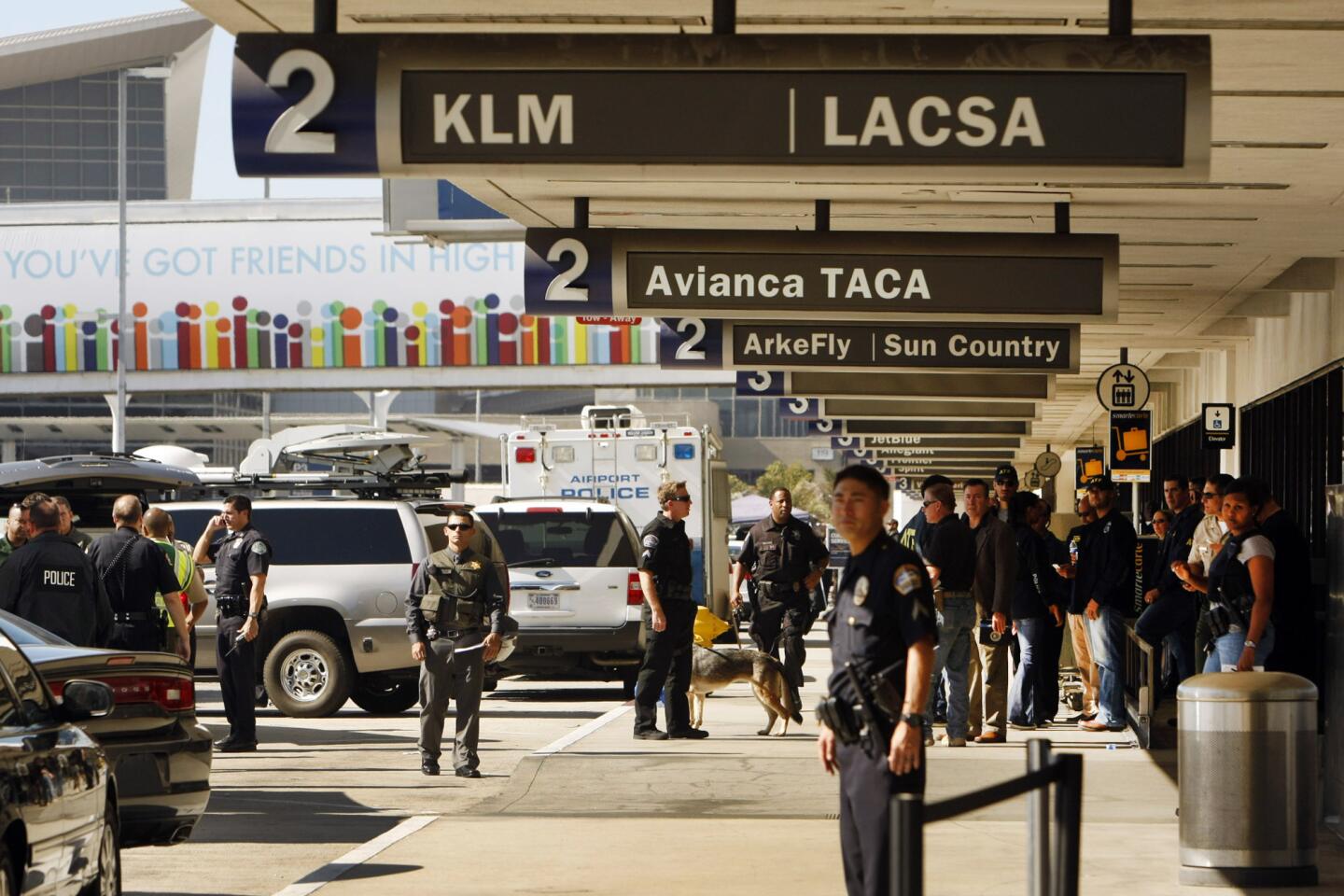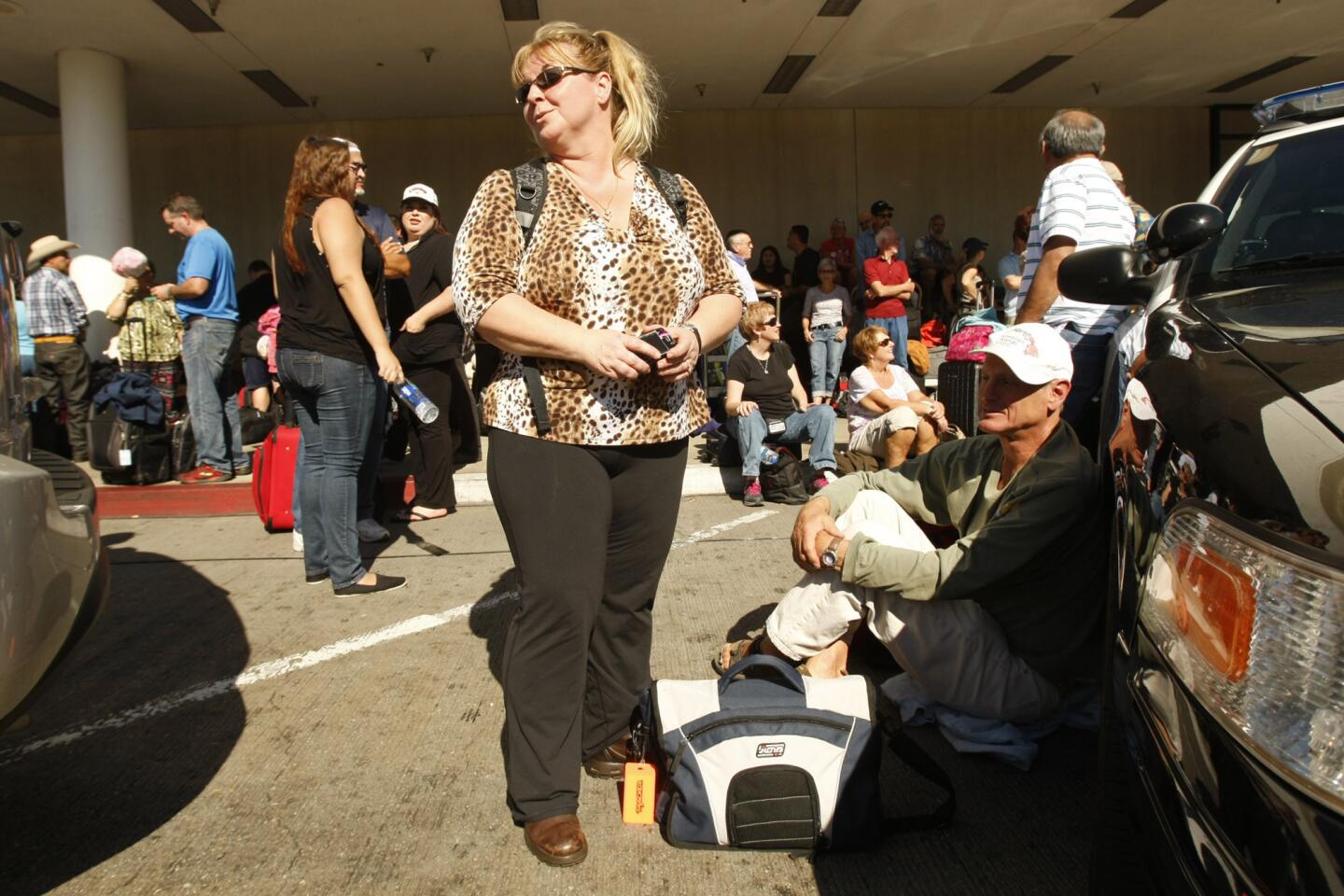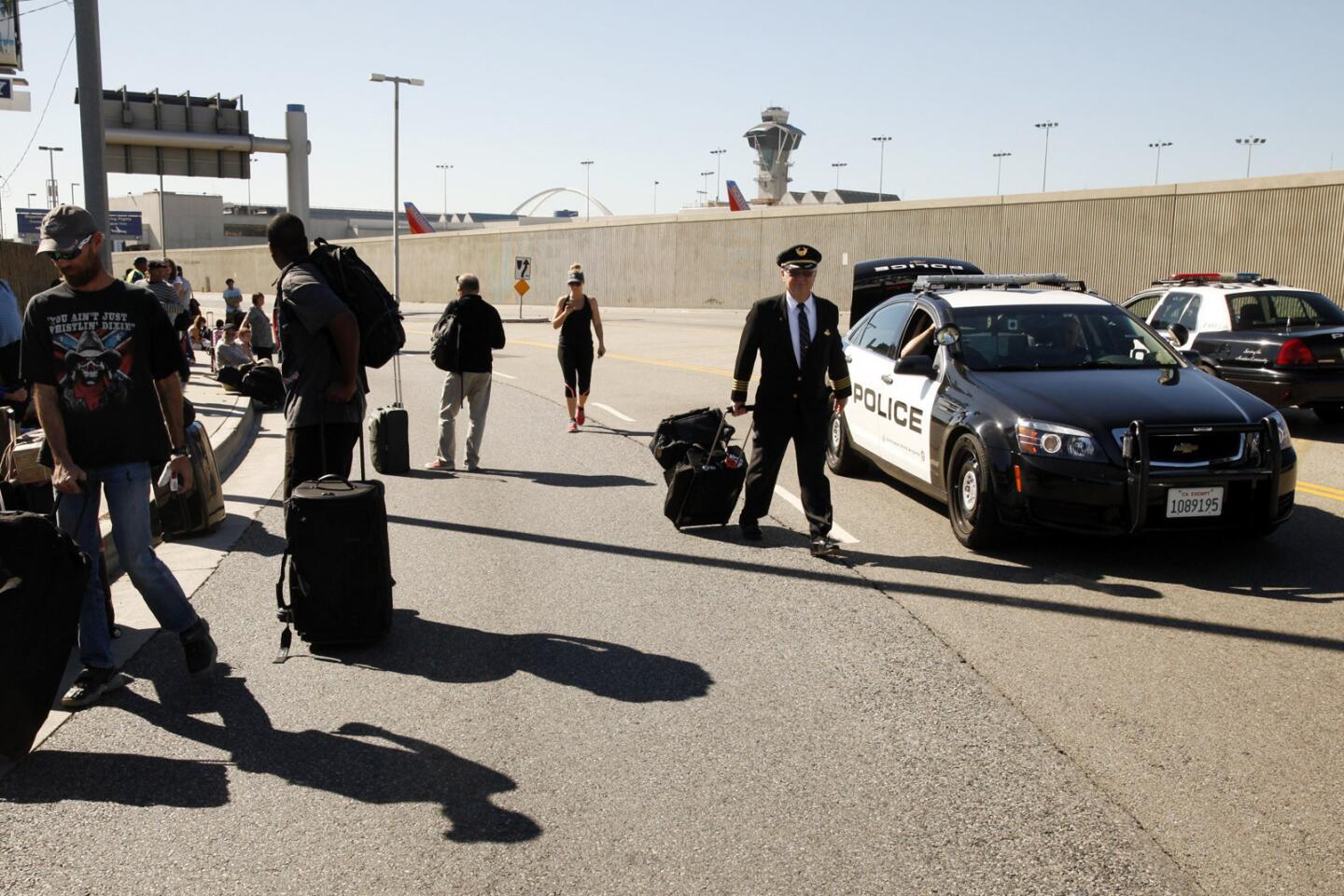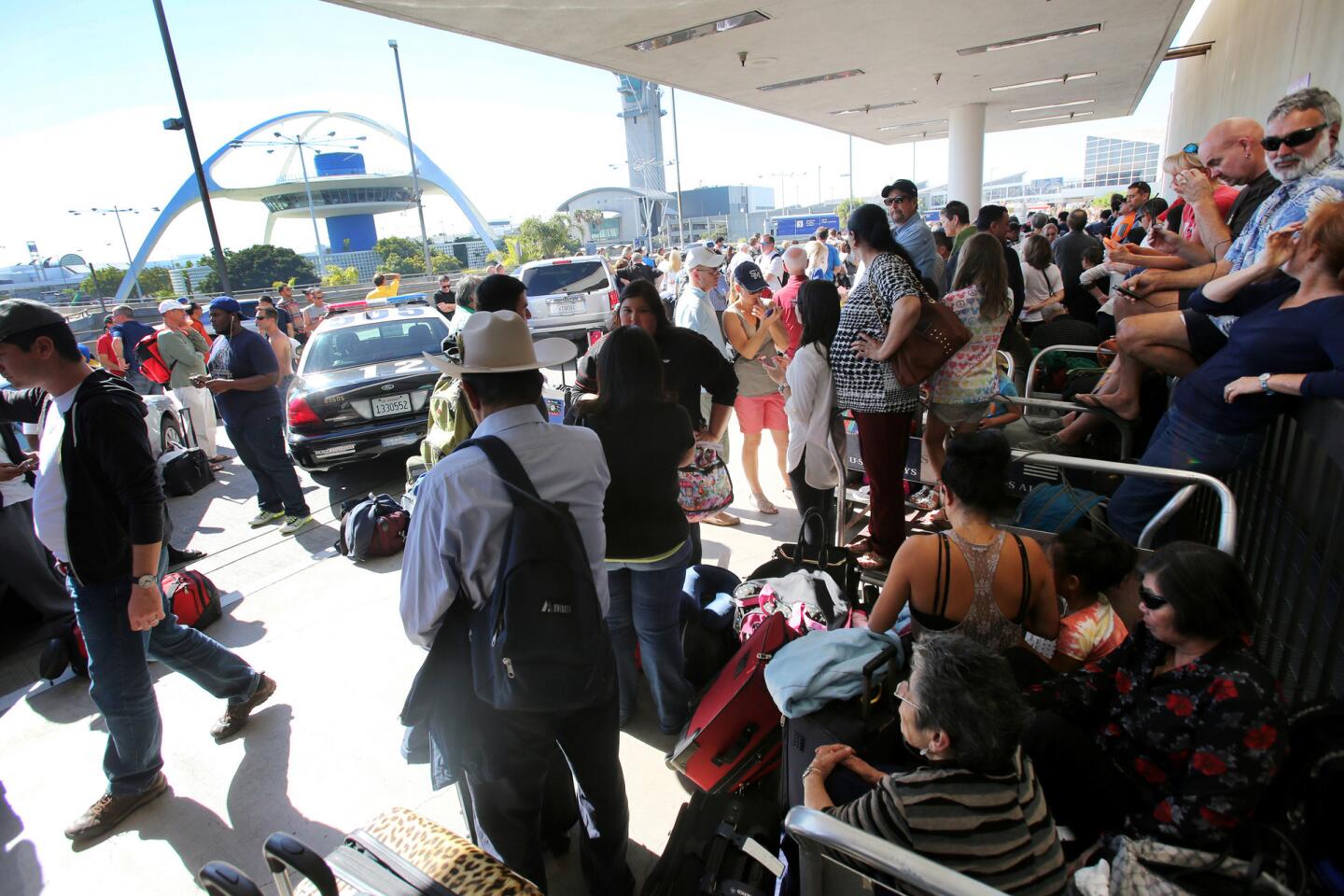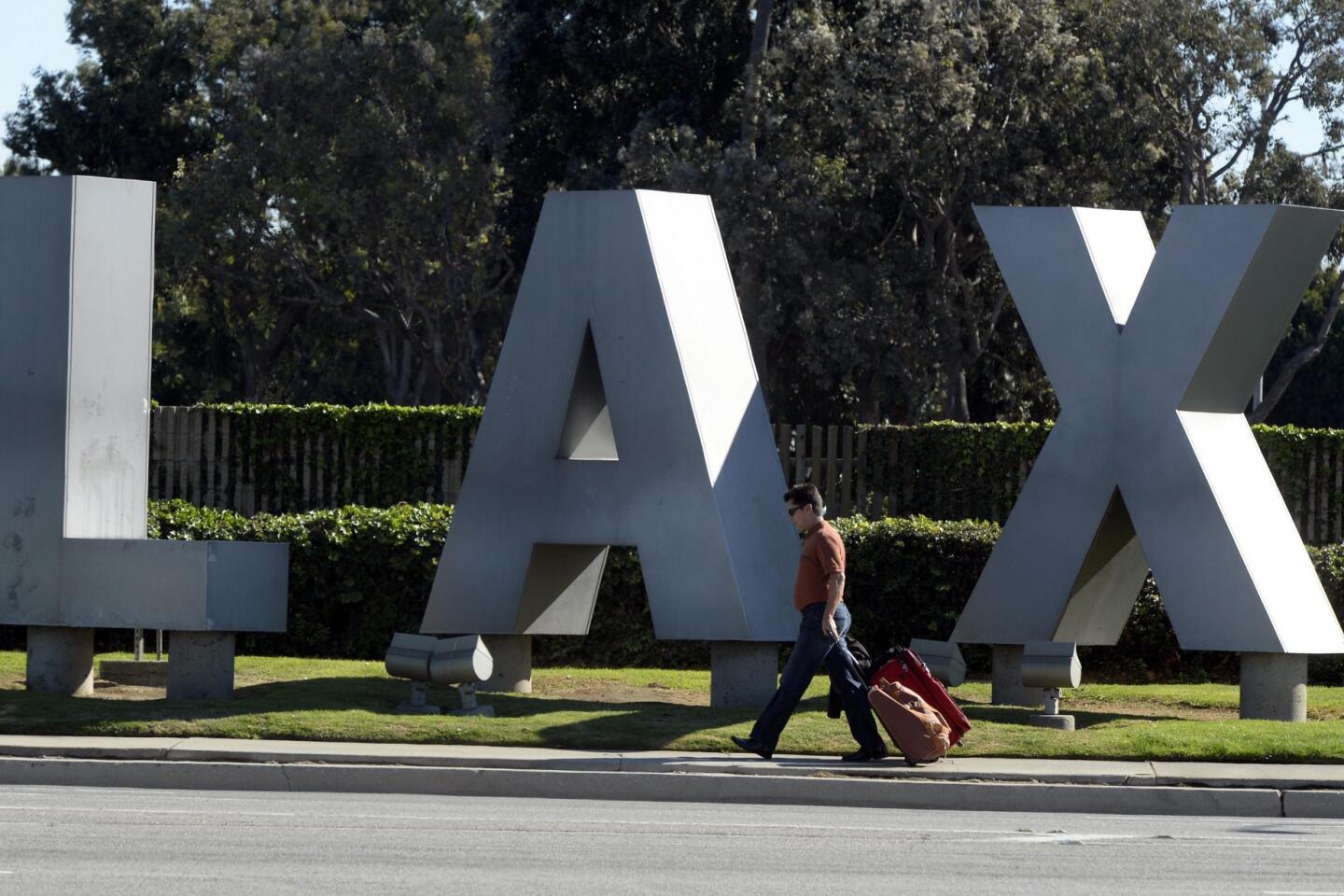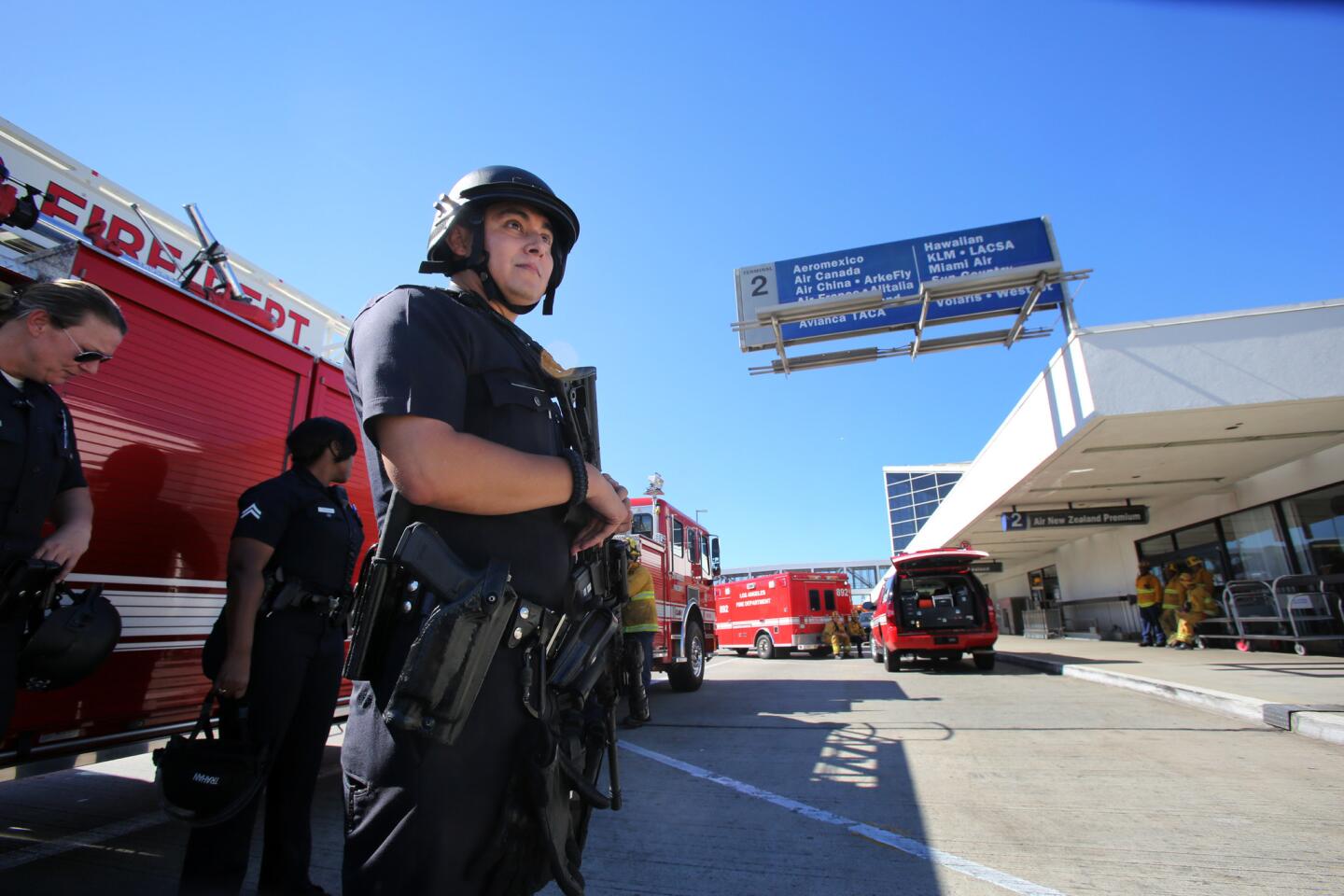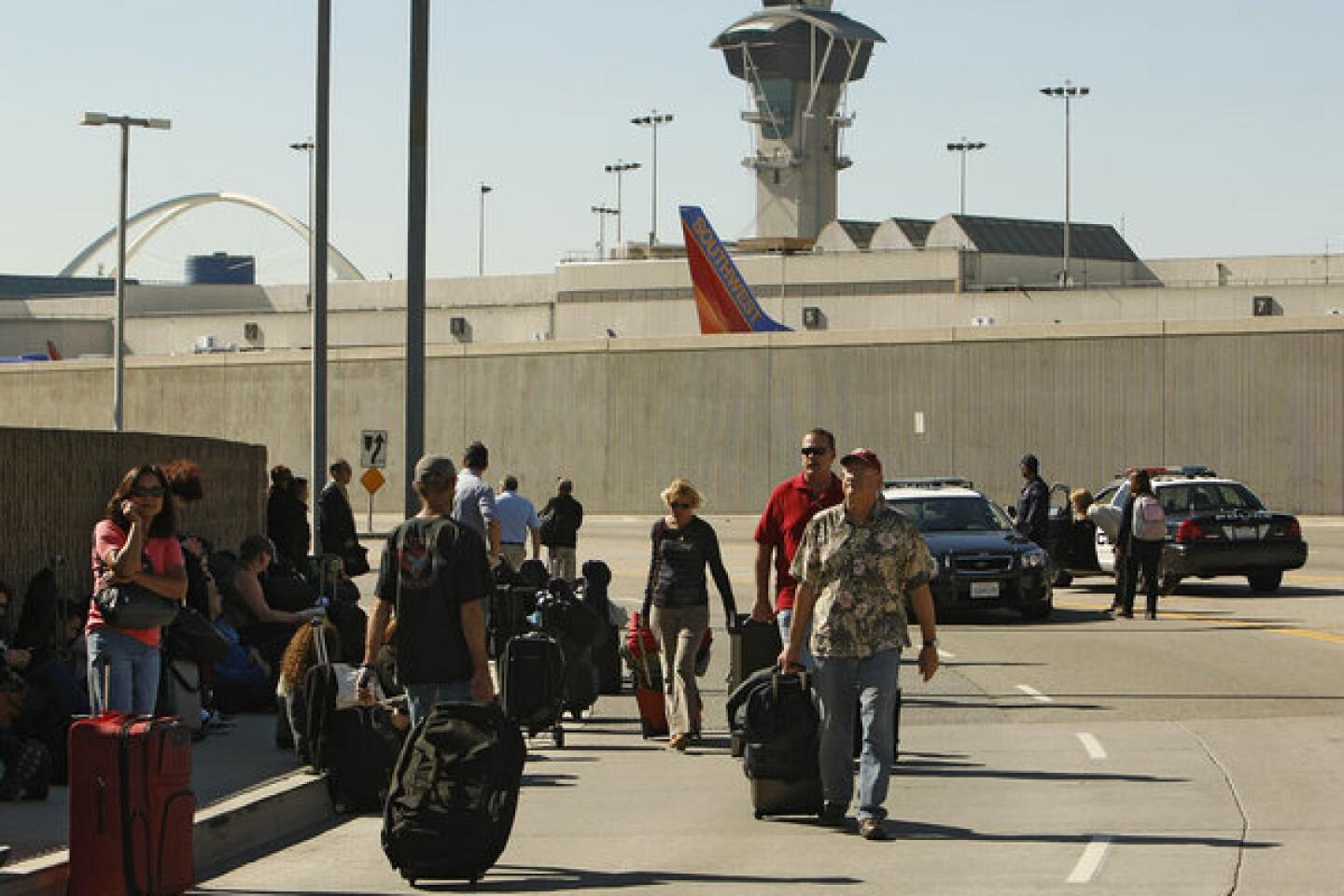LAX shooting sparks debate on security, arming TSA agents
- Share via
LAX police and the federal Transportation Security Administration are reviewing protocols in the wake of the shooting Friday that left a TSA agent dead and several other people wounded.
At a news conference over the weekend, TSA Administrator John Pistole said his agency’s review will include the question of whether its agents should be armed (they are not presently). “We will look at what our policies and procedures are and what provides the best possible security,” he said.
A review is also planned at LAX.
Experts have long said that lobbies, ticketing counters, baggage claim areas and sidewalks of the nine terminals at Los Angeles International Airport are easily accessible to attackers intent on bringing firearms or bombs into the airport’s public areas.
Creating a fail-safe security perimeter for the terminal area, however, would be extremely costly and might shift attacks by those seeking to do harm to other public gathering places, said Brian Jenkins, an authority on terrorism and aviation security at Rand Corp., a Santa Monica-based think tank.
“It would be very hard to do,” Jenkins said. “There would be very little net security benefit. Terrorists could go somewhere else, like attack a shopping mall in Nairobi or a theater in Aurora, Colo., or Times Square. What do we really gain?”
In Friday morning’s attack, authorities said, a gunman identified by police as Paul Anthony Ciancia, 23, carried an assault-style rifle through the lobby of Terminal 3 and began shooting as he passed through a Transportation Security Administration checkpoint.
The gunman then continued through a corridor of shops, apparently looking for TSA employees, officials said. Witnesses said he fired additional shots before being wounded by airport police near a circular area of passenger boarding gates.
One TSA agent checking passenger identifications near the checkpoint was killed -- the first in the agency’s history -- and at least two other agency employees and one civilian were wounded by gunfire.
On Saturday, Patrick Gannon, chief of the Los Angeles Airport Police Department, said the incident would be thoroughly reviewed to assess the police response and determine whether security improvements were needed. He praised the heroism of the officers who stopped the gunman near a fast-food restaurant in the terminal.
Internal reviews of such major incidents can be “brutal,” Gannon said, adding that he expects his department to make security adjustments as a result.
Some say the attack points to soft spots in airport security and the need for additional measures, including more uniformed and plainclothes police on hand.
Marshall McClain, a veteran airport policeman and president of the Los Angeles Airport Peace Officers Assn., said that earlier this year, armed police officers were shifted from their fixed assignments at TSA checkpoints to patrolling inside and outside passenger terminals.
The fixed positioning of the officers was a product of post-9/11 concerns that terrorists could breach checkpoints and reach passenger gates and parked aircraft.
McClain said patrolling officers were not at or near the TSA screening area when Friday’s attack occurred. But he added that it’s not clear whether having a police officer at the site could have prevented the shooting.
“In general, the officers are a good idea,” McClain said. “They could be a deterrent.”
He noted that the gunman who attacked the El Al Airlines ticket counter at the Tom Bradley International Terminal on July 4, 2002, waited until uniformed police officers had left the area.
In that shooting, an Egyptian-born man armed with a handgun killed two people and wounded several others before a security guard working for El Al fatally shot him.
Adding police officers to terminals and returning them to checkpoints might be beneficial, Jenkins said. But he agreed that it is hard to say whether they could have stopped Friday’s attack. The gunman, Jenkins said, could have killed an officer before moving past the checkpoint and into the terminal.
“A suicidal guy with a big rifle can walk through the doors of a terminal, get shots off and hit people,” Jenkins said.
Gannon defended his decision to reassign armed officers away from the TSA checkpoints, saying police need to modify their procedures to avoid becoming predictable.
The greatest threats to airport terminals are between the curbs on the street and passenger screening areas, he said, adding that more officers were needed to address those risks.
Police patrols in the terminals are responsible for the lobbies, ticket counters, concession areas, gates and sidewalks, as well as nonpublic areas such as baggage handling areas and ramps.
“We changed our strategy to a certain degree,” Gannon said. “I can’t run the same thing every day.”
The chief also praised the actions of his officers, noting that they managed to engage the gunman about a minute after the shooting started. In general, police patrols in the terminals try to reach the scenes of emergencies within a few minutes.
Overall, studies by Rand Corp. and a blue ribbon panel of experts appointed by former Mayor Antonio Villaraigosa have concluded that LAX is safe but that gaps in security still need to be addressed.
A 2004 Rand study found that the airport’s easily accessible terminals were particularly vulnerable to a ground attack or bombs planted in luggage, cargo, trucks or cars. Airport officials have since taken steps to reduce the risk, such as deploying more explosive-sniffing dogs and installing barriers to keep vehicles from crashing into terminals.
Released in late 2011, the report by the panel set up by Villaraigosa’s administration noted that $1.6 billion had been spent for new security measures at LAX since 9/11 and 250 officers added to the airport police department, bringing the force to about 1,000 sworn and civilian personnel.
It also concluded that improvement was needed in LAX emergency management, the security of its facilities and its police force. The panel also cited a perception that the airport administration under Executive Director Gina Marie Lindsey emphasized the ongoing modernization of the facility and made security a secondary priority.
ALSO:
Flights at LAX ‘back to normal’ after deadly shooting
Authorities investigating death of man burned in WeHo on Halloween
LAX shooting: Gunman wanted to kill several TSA agents, complaint says
More to Read
Sign up for Essential California
The most important California stories and recommendations in your inbox every morning.
You may occasionally receive promotional content from the Los Angeles Times.
